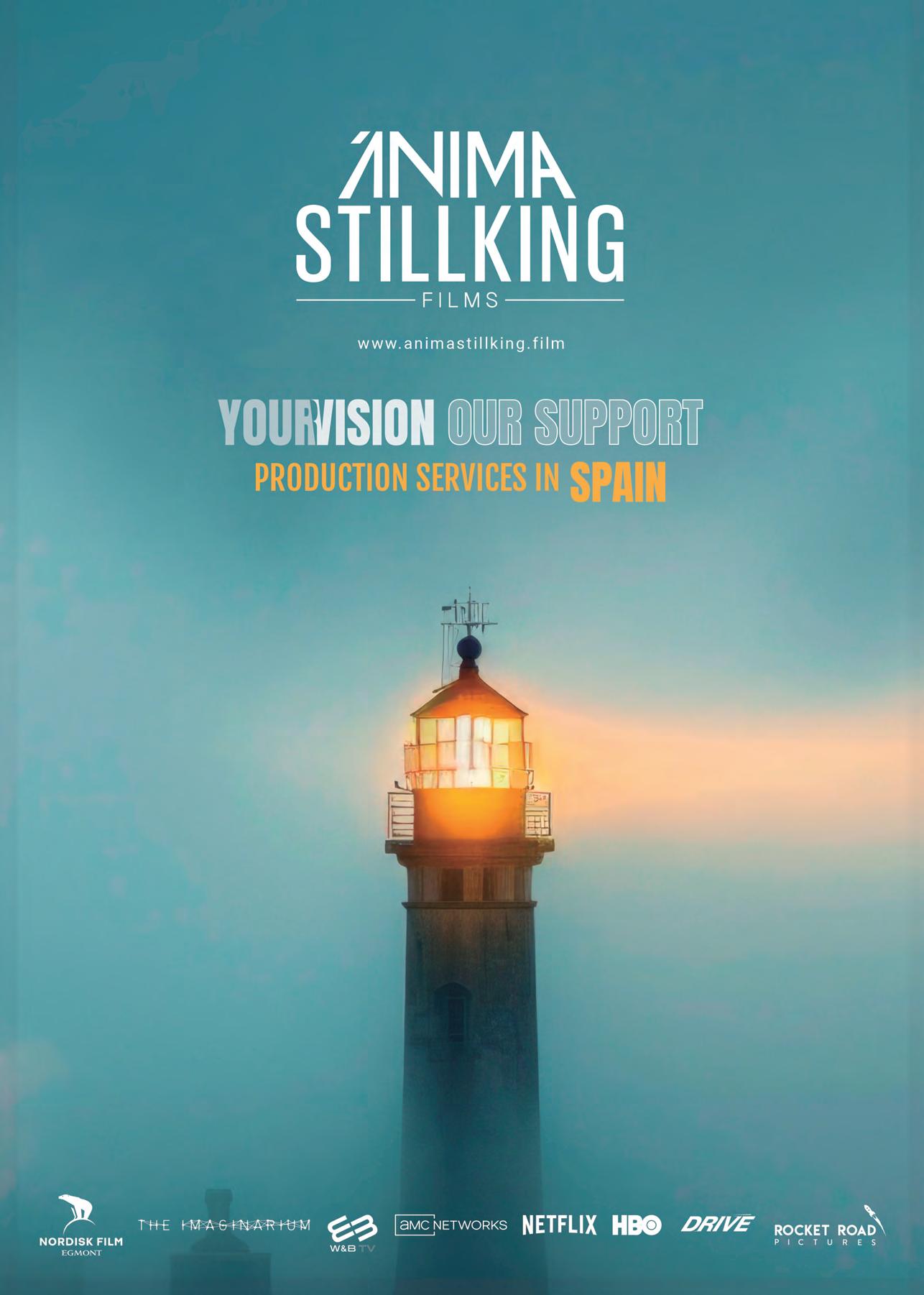








In the early days of cinema, filming on location was very unusual. As European new waves and American independent cinema became influential, the authenticity of places became essential.
Now we see it as something normal but what has changed in recent times is the fierce competition to attract national and international filming. The territories have realized the enormous economic benefits, both through direct investment and image, of hosting productions and there has been a proliferation of film commissions to facilitate their presence and the burst of tax incentives to lure producers.
In this context, RUBIK considers that this area has become a basic pillar of the contemporary screen industry and in this edition we tackle this subject from different points of view, now that in this final stretch of the year there are two significant events such as Shooting Locations Marketplace in Valladolid and Focus London.
The importance of this field is also reflected in the studies that are being carried out. Here we publish the key findings of two of them prepared by the specialist consulting firm OlsbergSPI. One on the economic impact of international filming and another on best practices in the screen sector.
Associations and guilds are also relevant. In this edition we interview several figures in these fields. On the one hand, we learn more about the figure of the location manager with an interview with John Rakich, president of the Locations Managers Guild International.
On the other hand, we want to know more about the film commissions with an interview with Carlos Rosado, who has been the president of the Spain Film Commission for more than 20 years, and Venia Vergou, recently appointed managing director of the European Film Commission Network.
As a Spanish magazine for the international market, RUBIK pays special attention to what Spain can offer. In this
edition, we interview Elisa García Grande, executive director of Invest in Spain at ICEX, as well as publish two very interesting articles about Spanish locations: a report on how Spain is often used to double for place from rest of the world and another one in which we highlight 12 mountain locations perfect to shine on the screen.
Likewise, this edition features articles on two productions filmed in Spain. One is the blockbuster Venom: The Last Dance from Columbia Pictures and Marvel Studios, which has been a great recent success story, and another is Mango, a romantic comedy by Mehdi Avaz for Netflix.
Other content that you can enjoy in this edition is a piece about the solutions that are being provided for Green Shooting, articles about AFCI Week and several location awards or an overview of new facilities for film and TV production that are being built in Spain. In short, a varied content menu to get the big picture.
Carlos Aguilar Sambricio and Miguel Varela

FRONT COVER PHOTO: VENOM. THE LAST DANCE @ Columbia Pictures and Marvel Studios, Courtsey of Sony Pictures
EDITED IN MADRID IN NOVEMBER 2024 BY MARATÓN AUDIOVISUAL S.L.
M-1895-2024
ISSN: ISSN 3020-5107
GENERAL CONTACT: HOLA@RUBIK-AUDIOVISUAL.COM
EDITORIAL CONTACT: REDACCION@RUBIK-AUDIOVISUAL.COM
ADVERTISING CONTACT: MARKETING@RUBIK-AUDIOVISUAL.COM




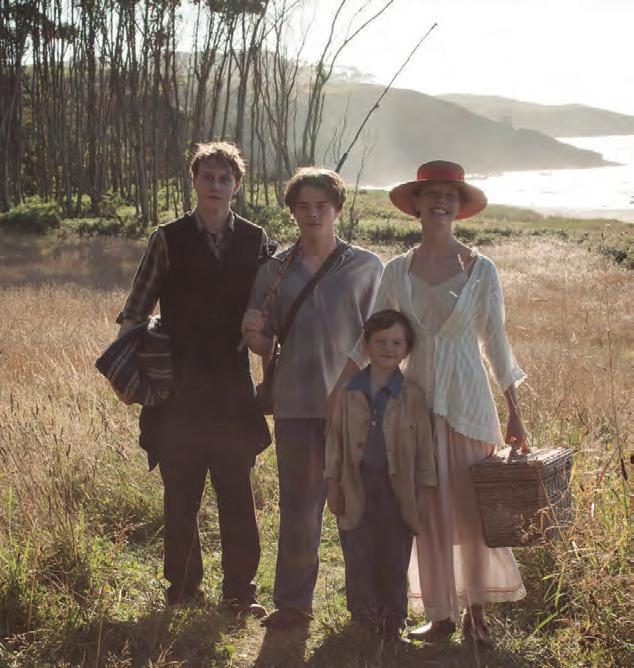
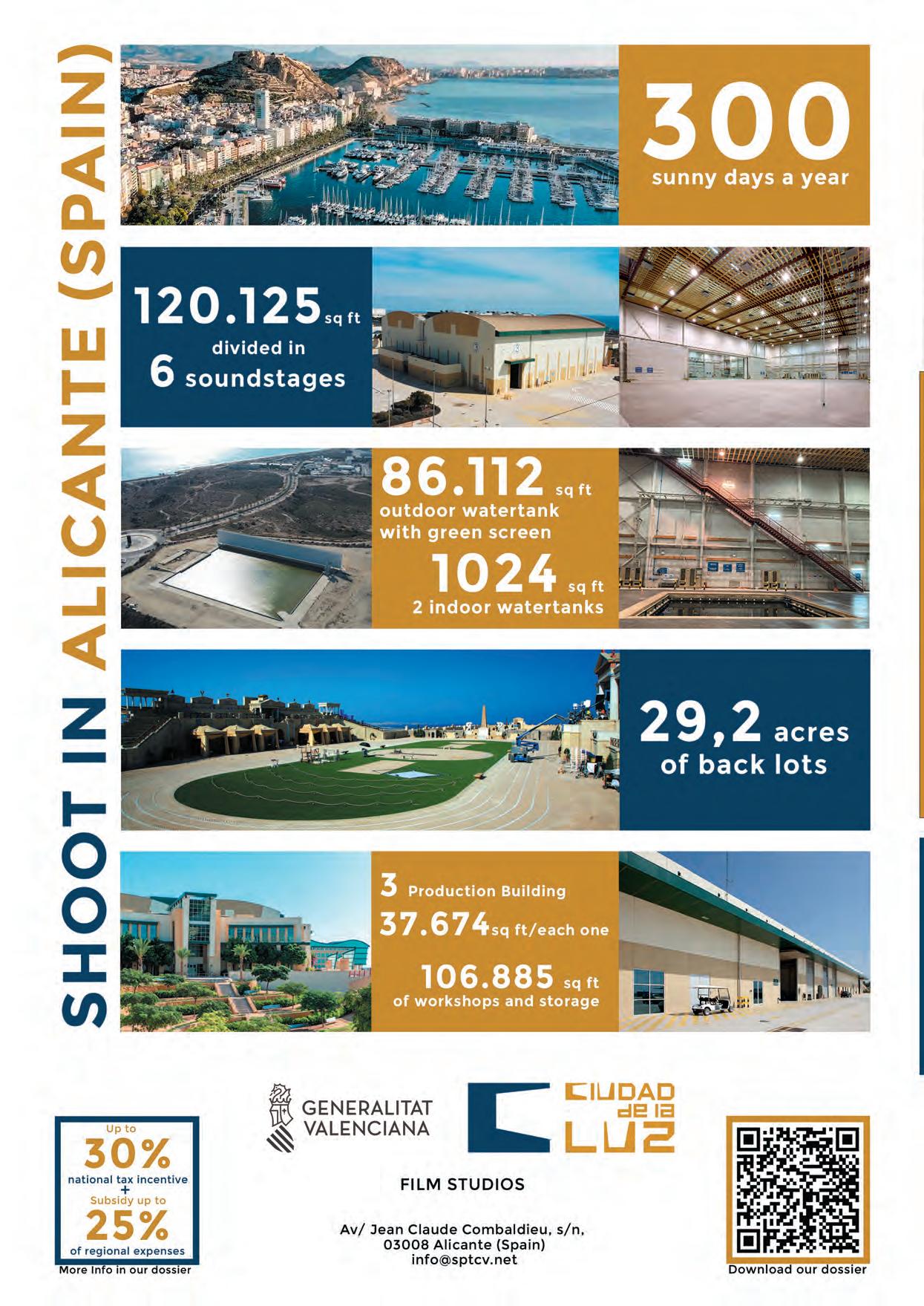
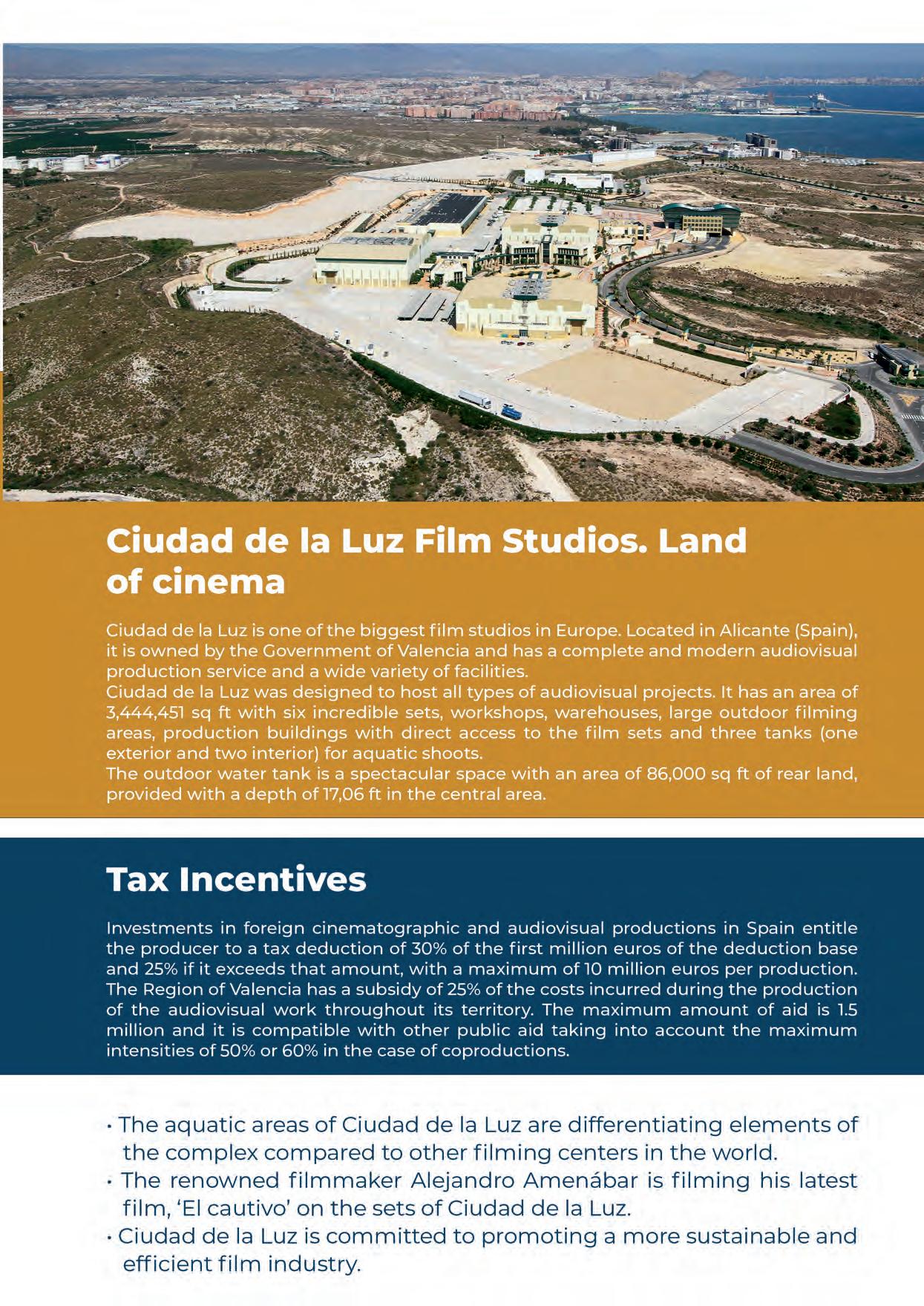

SHOOTING LOCATIONS MARKETPLACE, THE EVENT THAT BRINGS TOGETHER LOCATION MANAGERS, PRODUCERS AND FILMING DESTINATIONS, HOLDS ITS FOURTH EDITION ON OCTOBER 15 AND 16. ORGANIZED BY FERIA DE VALLADOLID AND SPAIN
FILM COMMISSION, AND POWERED BY CASTILLA Y LEÓN REGIONAL GOVERNMENT AND THE VALLADOLID CITY COUNCIL, THIS MEETING WILL HAVE THE PARTICIPATION OF MORE THAN 50 FILMING DESTINATIONS, OF WHICH 19 ARE INTERNATIONAL.
During the two days, professionals from more than 20 countries will meet at Feria de Valladolid to talk about filming locations, tax incentives, sustainability, screen industry development, etc.
Destinations, film commissions and service providers will be able to meet with 68 location managers, producers and creative directors from 13 countries. Most of them, 49, will be attending Shooting Locations Marketplace for the first time.
One of the new features this year is the incorporation of a new professional profile, the film designer, a creative figure
that provides context and complements the information provided by the location manager.
The participation of these professionals is the result of the collaboration agreement signed with the British Film Designers Guild. In this way, the professional profiles with whom destinations will be able to meet and present their proposals to host filming are expanded: location managers, executive producers and film designers. The 70 percent of the ‘buyers’ come from the United States and Great Britain, the two main markets of the Western screen industry.
The global approach, one of SLM’s goals, is consolidated on this occasion since
countries such as Austria, Greece, Italy, the Netherlands, Lithuania and Portugal are incorporated. Names such as HBO/MAX, Warner Bros. Discovery, Netflix, Apple TV, Amazon, Sony appear in the biographies of attendees.
Shooting Locations Marketplace maintains agreements with professional associations: the Association of Film Commissioners International (AFCI), the European Film Commission Network (EUFCN), the aforementioned British Film Designers Guild, Location Manager and Location Scout and Profilm.
This year a great amount of Spanish film commissions and film offices will attend: Alicante Film Office, Almería Film
© Shooting Locations Marketplace 2023

Commission, Andalucía Film Commission, Asturias Paraíso Natural Film Commission, Bilbao Bizkaia Film Commission, Burgos Film Commission, Castilla y León Film Commission, Catalunya Film Commission, Costa Blanca Film Commisioni, Film Madrid, Film Valencia, Gran Canaria Film Commission, Granada Film Office, Ibiza Film Commission, La Palma Film Commission, Madrid Film Office, Manresa Film Office, Peñiscola Film Office, Región de Murcia Film Commission, Salamanca Film Commission, Santiago de Compostela Film Commission, Segovia Film Office, Sevilla Film Office, Soria Film Office, Spain Film Commission, Tenerife Film Commission, Valencia Film Office, Valladolid Film Commission, Vigo Film Office and Zaragoza Film Office. Ciudad de la Luz Studios, some hotels, location company Scout and Film and service production companies Anima Stillking, Seven Islands, Filmax and Fresco Film.
Regarding international filming destinations, SLM will have Portugal Film Commission, Egypt Film Commission, Netherlands Film Commission, Norway Film Commission, Visit Cascais, Hessen
Film, Vilnius Film Office, Film France, Film London, Film in Austria, Macedonia Central Film Commission, Tirol Film Commission, Bretagne Film Commissioin, Nouvelle Aquitaine, Vienna Film Commission, MDM Film Commission, Friuzia Venezia Giulia Film Commission and Screen Flanders. There will be some companies as A Film Location, Zaman Productions, Ready to Shoot or Menufilmid.
The 70 percent of the ‘buyers’ come from the United States and Great Britain, the two main markets of the Western screen industry. The list of countries of origin also includes South Africa, Belgium, Serbia, Canada, the Netherlands, Italy, Poland, Finland, Denmark, Germany and Spain.
The event will continue in the following days with fam trips. International location managers will visit different territories to learn about potential scenarios for their future projects.
Castilla y León, Bilbao, Ibiza, Andalusia, Comunitat Valenciana and the Canary Islands are the destinations of these trips in which they will discover cities, natural spaces or film studios that can host their next productions.
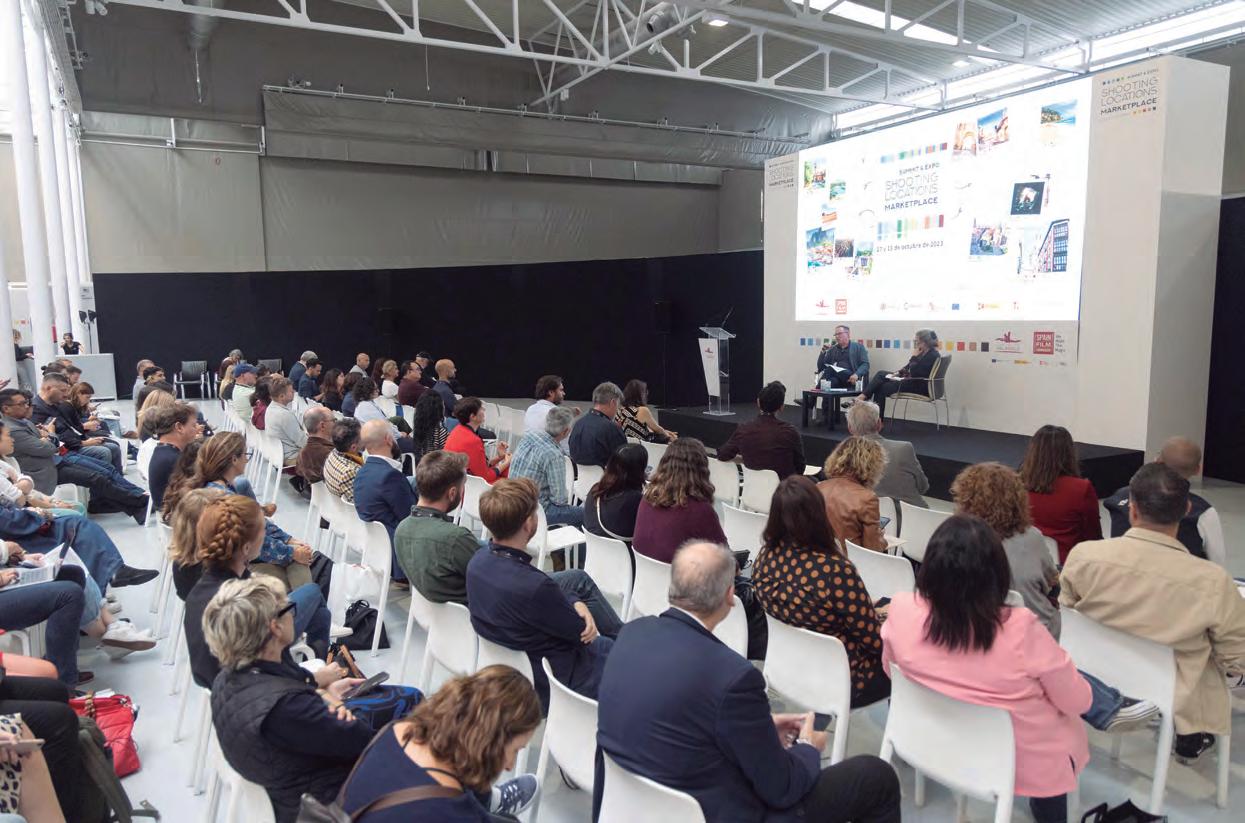
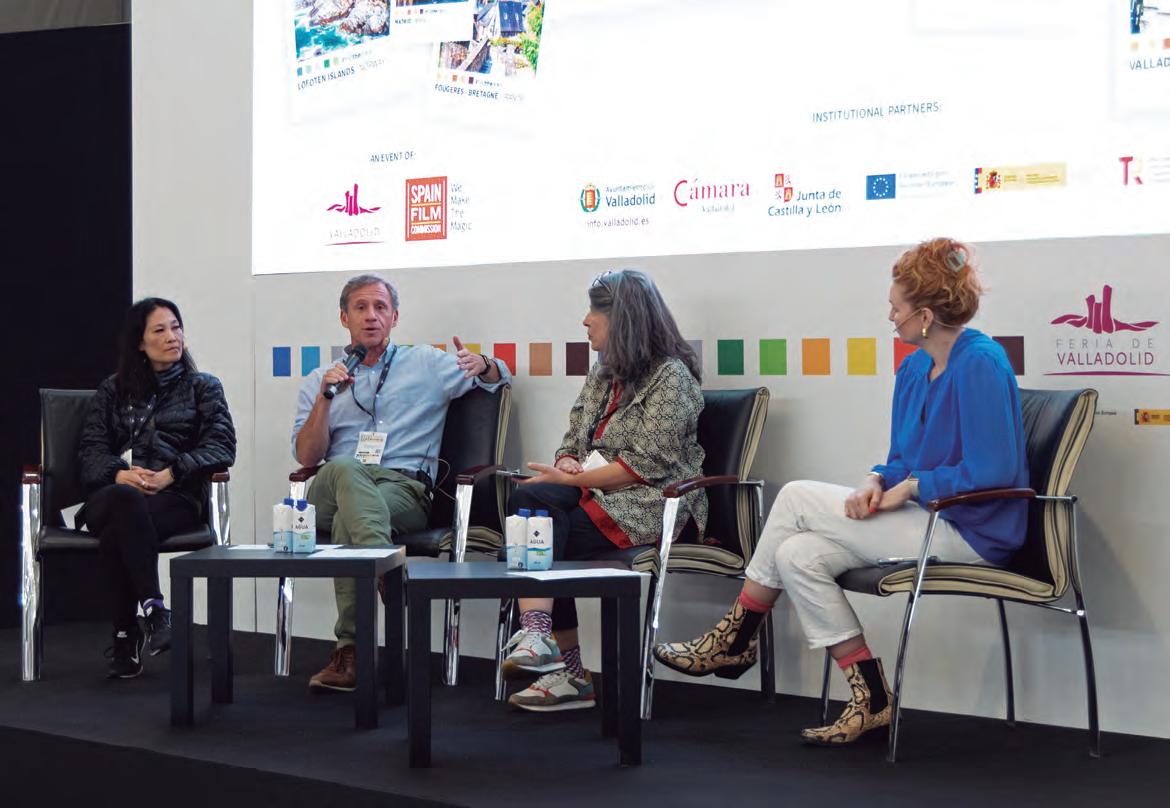
“THE MOST IMPORTANT EVENT OF ITS KIND IN EUROPE”
The managing director of Feria de Valladolid, Alberto Alonso, is pleased with the upcoming Shooting Locations Marketplace: “The good results of the three previous editions make this growth possible. It is an innovative project created at Feria de Valladolid, which came to reality thanks to the support of essential partners such as the Spain Film Commission and institutions such as the Castilla y León Regional Government and the Valladolid City Council. This event helps position our territory as a filming destination and places us on the international map of professionals in this field.”
Alonso recalls Shooting Locations Marketplace was born with a global reach, so “having representatives from more than 20 countries is a success and an incentive for the future.”
Juan Manuel Guimeráns, acting Secretary-General of the Spain Film Commission, considers the SLM to be “the most important event of its kind in all of Europe, as reflected by the level and volume of international attendees and the support of the Film Commissions”.
The event is celebrated in a context of joy for the filming industry in Spain. The 37 international shoots carried out in Spain during 2023 contributed a direct investment of 197.5 million euros, according to the report driven by Profilm, the association that brings together 90 percent of international service production in Spain.
This year’s opening speech is called ‘Filming in challenging times’ and will be conducted by Mark Costa (HBO MAX) and Elona Tsou (Warner Bros. Discovery).
Challenges of today’s filming will be addressed. In addition to the usual obstacles that film crews have to face, in recent years essential aspects such as wars, strikes, pandemics, inflation and problems with energy supply have been added.
In the afternoon of the first day there will a roundtable, ‘I’d like to speak to….’. The discussion will shine a light on the details of filmmaking and the people that are decision-makers when it comes to picking a filming destinario. The speakers are the exec
producers Bill Doyle, location scout Sabine Schulmeyer, Gianluca Novel (Friuli Venezia Giulia Film Commission) and Piluca Querol (Andalucía Film Commission), moderated by John Rakich, Location Managers Guild International’s president.
Second´s day morning will have an interesting panel ‘They did not pick me, why?’. Attendees will hear about the main reasons why filming destinatios are rejected for a production. The speakers will be Caroline Greville-Morris (British Production Designer Guild), Jaume Jordana (locations manager), Michael Glaser (supervising location manager) and Stefanie Rauscher (Viena Film Commission), moderated by Venia Vergou, EUFCN’s managing director.
Following this discussion, Shooting Locations will present another round table: ‘I am ready!’. Panelists will discuss about how to be ready to host film and TV productions. Professionals will hear opinions from Ana Marques (Portugal Film Commission), Tammy Glover (Sony Pictures TV Studios), Alex Boden (Pistachio Pictures) and Kristine Guzmán (Castilla y León Film Commission), moderated by Juan Manuel Guimeráns (Spain Film Commission).

REGISTRATION IS OPEN FOR FOCUS 2024, THAT WILL TAKE PLACE ON 10-11 DECEMBER AT THE BUSINESS DESIGN CENTRE LONDON. EMBRACING THE CONVERGENCE OF ALL THE SCREEN SECTORS, FOCUS IS A TRADE EVENT WHERE ATTENDEES
CAN MEET WITH CONTENT MAKERS AND FACILITATORS FROM OVER 100 COUNTRIES.

FOCUS, the meeting place for the international production community, returns in December 2024 for its tenth edition. Already established as an essential go-to trade event, it’s aimed to content makers currently working in the industry that can apply for a free delegate pass.
Embracing the convergence of all the screen sectors, FOCUS is the only UK trade event where attendees can meet with content makers and facilitators from over 100 countries, attracting thousands of professionals from film, TV, advertising, animation and games.
FOCUS offers attendees valuable contacts, an inspiring session programme, facilitated meetings and a host of networking opportunities.
The event has at Show Floor with more than 250 exhibitors offering millions of dollars of filming incentives and production solutions for all types and levels of project.
Also, there are more than 60 free-toattend conference sessions and exhibitor presentations with 200 expert speakers. Since the organisation gives access to the FOCUS Scheduler you can also make connections & arrange one-to-one meetings at the show.
The FOCUS conference programme is developed in consultation with a Content Advisory Board featuring representatives from leading industry bodies, including Pact, The Production Guild, BFI, BFC, UK Screen Alliance, ScreenSkills, Directors UK, Advertising Producers Association and Games London.
FOCUS has a comprenhensive approach, from film and TV, to advertising
and gaming; from pre- to post-production. It’s now a relevant end-of-year industry event for anyone involved in the creation of onscreen entertainment.
Besides the opening of the registration, the organisation is open for exhibitors. Although stands are almost sold out, there are some exhibition and sponsorship opportunities still available.
The FOCUS conference is developed in consultation with Pact, The Production Guild, Directors UK, BFI, BFC, UK Screen Alliance, ScreenSkills, Advertising Producers Association. Sponsored by Variety.
LAST EDITION’S FACTS AND FIGURES
A record number of professionals from across the creative screen industries, including film, TV, advertising, games and
immersive, participated in the ninth edition of FOCUS.
Over 3,500 delegates, exhibitors and sponsors from 84 countries enjoyed two packed days of conference sessions, meetings and networking events at the Business Design Centre London (December 5-6).
FOCUS Managing Director JeanFrederic Garcia, stated that we are living “exceptionally challenging times for the industry” so he hoped their conferences and networking events “brought new opportunities and inspiration” to attendees.
There were 58 conference sessions and exhibitor presentations which featured over 200 expert speakers. Keynotes, panels, and workshops addressed the key talking points of 2023, from the challenges of financing and structuring projects in turbulent times, navigating new technology, AI, creating content sustainably and nurturing new talent.
On the Show Floor, attendees were able to meet with 258 exhibiting companies (up 25% from 2022), including international film commissions, agencies, film-friendly locations and production service companies from every continent. For the first time both Film USA and AFCI exhibited at FOCUS and other new exhibitors included United Airlines, Western Australia and Kazakhstan.
Debuting at 2023 edition, a dedicated gallery space offered a range of Producer Surgeries, covering finance, accountancy, tax and business strategy. Delegates were able to access bespoke one-to-one meetings with leading industry advisers Saffery, Coutts and Triple Exposure (Alliotts, Performance Film & Media Insurance, and Reviewed and Cleared.)
FOCUS also offered lots of informal networking events, including the FOCUS Welcome Drinks sponsored by Entertainment Partners and FLB Accountants; Producers’ Brunch with Variety & PACT sponsored by CCS Rights Management; PGGB Lunch, sponsored by United Airlines and The Polish Film Institute; Location Managers’ Xmas Drinks with LMGI, sponsored by Supply 2 Location Group and the FOCUS Producers’ Opening Mixer, sponsored by Romanian Advertising and Media Association. There were also numerous receptions hosted by international partners and The Film Hawai’i Coffee Bar and the 2 in Tents Bar were busy meeting hubs.
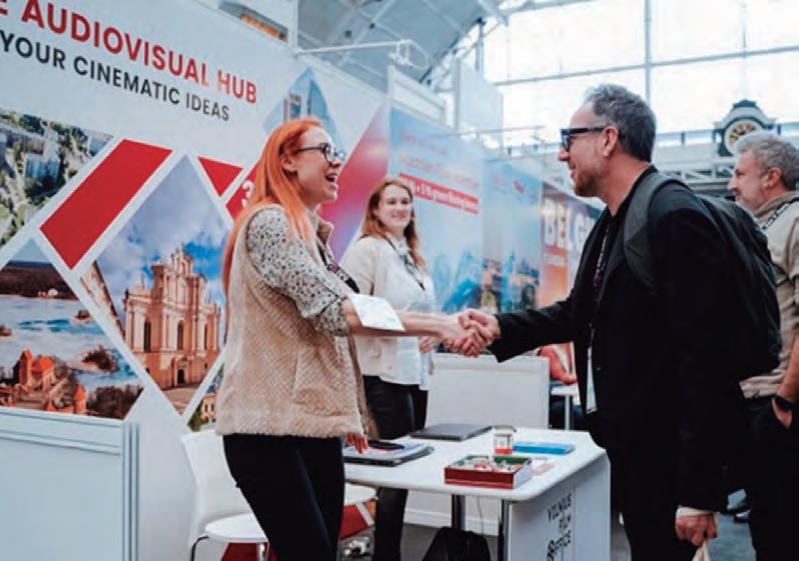


FILM COMMISSION PRESENTED A STUDY ON THE ECONOMIC IMPACT OF INTERNATIONAL FILMING IN SPAIN. THERE, RUBIK INTERVIEWED CARLOS ROSADO, WHO HAS BEEN ITS PRESIDENT FOR MORE THAN 20 YEARS AND WHO IS ABOUT TO PASS THE BATON, TO ADDRESS THE DETAILS OF THIS STUDY, THE LATEST NEWS OF THE ASSOCIATION AND THE PROJECTS THEY ARE FOSTERING.
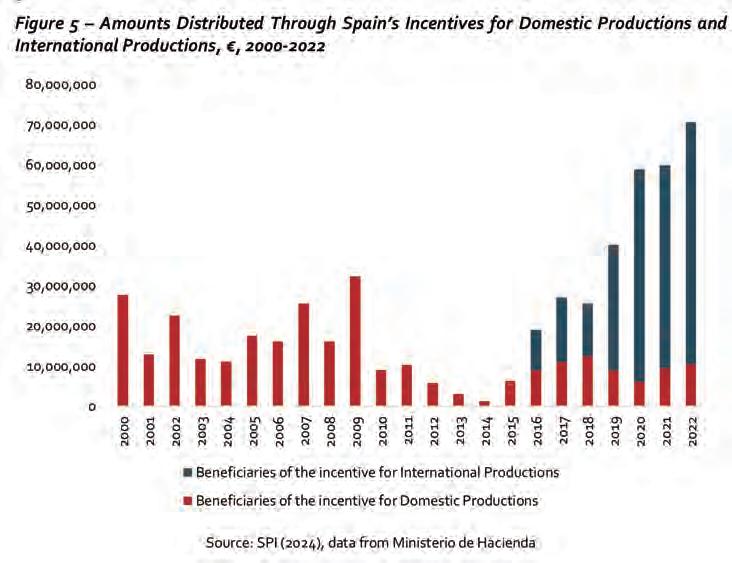

RUBIK: You have now presented the first study of the Economic Impact of International Filming in Spain. At Spain Film Commission you coined the term ‘the economics of filming’, so I understand that commissioning this report was essential, right?
Carlos Rosado: Yes, we had to start from a concept: filming is an industry. It´s not an accessory or technical part of a production, but it is itself a sector of the economy. We have been defending it for a long time and we had verified it in a partial and indicative way, but we needed a solid and in-depth study to clear up what we call the economics of filming, to tell us what the reality is.
The study, carried out by Olsberg•SPI, which is probably the most prestigious consulting firm in the world on these issues, shows some truly revealing data that we are not facing a marginal sector.
“SPAIN´S
INCENTIVE IS ONE OF THE MOST COMPETITIVE

Taking into account the period that has been covered is very short, everything indicates that when we tackle new studies, as we want to do, these data will be consolidated and improved, so that they will have to influence policies and practices that are carried out in Spain.
RUBIK: Where do you think these policies should go?
C.R.: This is the first study that has been done, so it is more difficult because it creates a method. Some changes are required in public policy strategies. The tax incentive is very profitable for the economy, so we must ask the Ministry of Finance to better specify not only of the figures of the money they give, but of the money that is certified to them, so that we can better see the incentive’s impact.
In general, obtaining data is very important to improve and also the collaboration of companies in the sector. We have an excellent relationship with the association of service production companies PROFILM, but not everyone is in PROFILM.
“Our network coordination allows us to meet the industry demand; our territoriality is the key to Spain’s success as a filming destination”
In fact, there are more than 30% of the productions that are not from members of the association.
So there are improvements to be made. Improvements in public policies and even in the tax incentive itself. At some point the Government will have to consider whether the maximum and minimum limits have to be modified to cater for productions with a much higher budget than the current 10 million euros or with a low budget.
The study traces a path that, being so reliable, will force us to take measures and meet the requirements that the studio sets, not only in fiscal matters, but in the Film and Audiovisual Arts Law, which needs to modernize and adapt to the new reality of the country.
For example, we are now into virtual production. You must have a policy to see how to monetize the use of virtual scenarios that have previously been mapped.
RUBIK: I want to address other issues related to Spain Film Commission. One of your objectives has always been to extend your network. Recently Melilla has joined your association. How do you assess SFC’s expansion?
C.R.: Among our founding principles was the diversification of filming locations and, therefore, a network was required. We have been building it since 2001 from the bottom up.
In reality, we have practically covered the entire national territory. We are missing

the autonomous city of Ceuta, but we are already working on it. All the autonomous communities are represented, as such, except for Galicia. In the rest of the country, we are practically present in the entire territory, even if it is by aggregation of provinces, because there are some Spanish regions that are more provincialized, such as the Basque Country or Castilla y León.
Below each of our partners, in many cases, they display very extensive local networks. This is the case of Andalusia, Valencia, Castilla-La Mancha... It does not appear in our figures but they are dependent on our partners, so the capillarization is enormous.
Spain, in the 23 years Spain FC is being active —and 26 years for Andalusia Film Commission— , is a top-country at an
organizational level in Europe. This allows us to meet the demands of the industry because this territoriality is the key to Spain’s success as a filming destination. It is an evidence and the data proves that.
RUBIK: Regarding tax incentives, in 2021 they were improved and they have recently been increased even more in Basque Country. What´s your opinion on this evolution?
C.R.: Spain’s tax incentive in 2015 was very limited but it was a turning point that allowed subsequent governments to modify it. The tax reform undertaken by the Progressive Government in 2021 makes the Spanish tax incentive one of the most competitive in Europe, if not the world.

Therefore, we are satisfied. It is true that the cap or limit can be improved. We always say that we should change the 10 million euros maximum and the 1 million minimum. Some other details should also be changed that would improve the way it´s managed.
But there is one element that must be paid attention to: we are in a very internationally competitive and very dynamic market. Countries improve their incentives as they see improvements in others. It is not that we are dissatisfied but it’s just that we have to always be at the forefront if we want to maintain competitiveness.
RUBIK: We are now in the final stretch of the Spain Audiovisual Hub. One of its objectives was to attract international filming. What assessment do you make of the scheme’s development? Have the premises being met?
C.R.: I think it is a fact that pointing the screen sector as a strategic sector was a great success of the Government of Pedro Sánchez and Econmic Affairs vice president at the time, Nadia Calviño. It has been decisive. There has never been such an ambitious and well-resourced strategic action to foster film and TV production in Spain.
Regarding Spain Film Commission, we have spent the resources that have been granted to us very well and therefore this demonstrates the instrumental usefulness of the Spain Film Commission.
But we have to stress some remarks. The usefulness of screen sector has been proved, so this scheme cannot end in 2025. We must
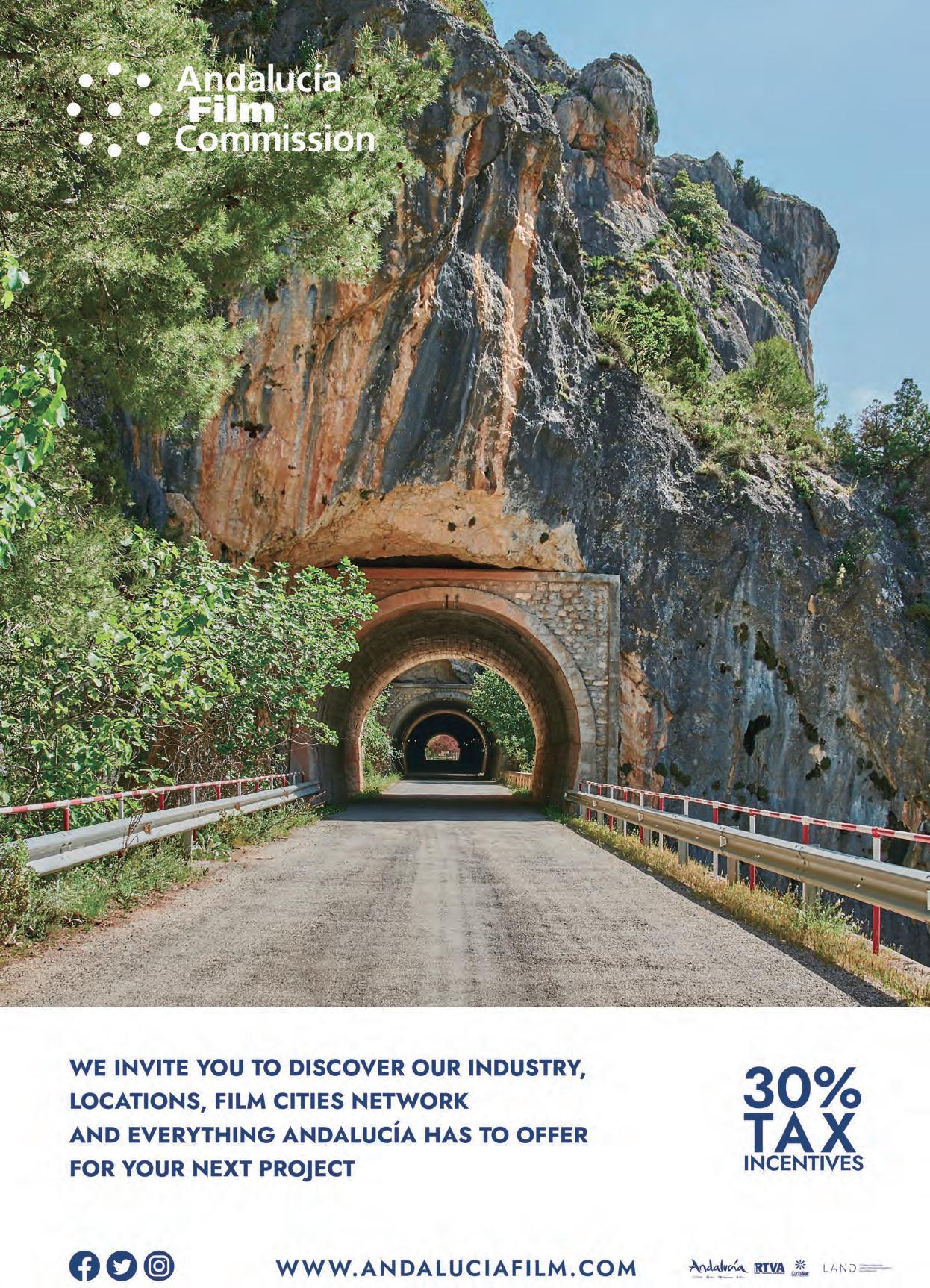

tell the Spanish public authorities that we must continue. You have to analyze what has gone well, to delve deeper into it, and what other things didn´t work.
The Hub has been a success of this government. It is a success that, in addition, has a structuring vocation and has really improved the structure of Spanish screen sector, both public and private.
“The Spain Audiovisual Hub has been a success. Moreover, it has really improved the structure of Spanish screen sector, both public and private”
The involvement of the autonomous communities is a very important value. It is true that it introduces an internal competitiveness factor within the territories, but it is very good that autonomous communities, both in the common tax regime, as is the case of Valencia or Madrid, as in the regimes of the Basque Country, Navarre or the Canary Islands, have made the efforts they are making. A model for creating initiatives for the territories of Spain has been created. Spain is not a centralist country, because filming takes place in many places, so the economy has to be distributed in all these places.
RUBIK: Regarding the initiatives you’ve carried out with the resources of the Hub,
one of them has been the creation of a database of Film Studios and Stages. Spain is well known internationally for its natural locations, but production hubs must be taken into consideration. Ciudad de la Luz has recently reopened and several hubs are being built...
C.R.: Indeed, we are tired of saying it. I am very insistent on this: Spain has a significant deficit in state-of-the-art large production hubs with the capacity to host big productions. It often happens to us that international producers tell us: ‘If you had stages in Spain, we would stay here to do interior scenes but we can’t’. Other countries with which we compete are doing it so we know that Spain needs to have more of these infrastructure distributed throughout the national territory. Madrid Content City, Ciudad de la Luz or what is being projected in the Canary Islands is very good, but many more studios are needed. In England, to give an example, stages are being built intensively because they have waiting lists.
I have been very insistent for years saying that Spain needs to have water tanks because supply creates its own demand. Since there are drones, more aerial scenes are introduced in the scripts because, otherwise, using a helicopter is very expensive. Spain has an advantage because backlots behind a water tank could allow, because of the Spanish weather, to continue filming easily.
RUBIK: Another relevant initiative that you are working on is establishing alliances with other countries to carry out business trips. India is an example. How are you working on this?
C.R.: We have been doing this for a long time. We take care of the consolidated markets and maintain them because,
obviously, we have to do it, so we are in Cannes, Berlinale, Focus, American Film Market... But we are constantly exploring emerging markets, some already with very important tangible results, such as the case of India.
In India we have signed agreements with the three large private producer corporations in New Delhi (the Film Federation), in Bollywood (the Producers’ Guild) and in Goa (the Chamber of Commerce of Film for central and southern producers). This has allowed India to start filming abroad and has already filmed in Spain a couple of times and with more projects of this type to come.
“Spain has an advantage regarding soundstages because backlots allow, thanks to the Spanish weather, to continue filming in the surroundings easily”
Same with China, where there is a powerful pool of producers, or in the Busan market in South Korea. We have gone to Australia, which is a very powerful country. When they had connections with Europe, they’d do it through the United Kingdom for obvious reasons, but building networks with them will ease new collaborations.
We have a very close relationship with our colleagues in Portugal and Latin America. Not because we want to increase filming from there, but because we believe that there is a common element that is political or institutional in nature. We must work together and share strategy.
Then, we carried out a first trip to the United States before the pandemic, which was followed by that of the President of the Government after the pandemic in 2021. Thus, relations with the United States and collaboration have been greatly improved. For example, we collaborate with the Motion Picture Association (MPA), providing them with information and improving relations between Spanish and North American producers”
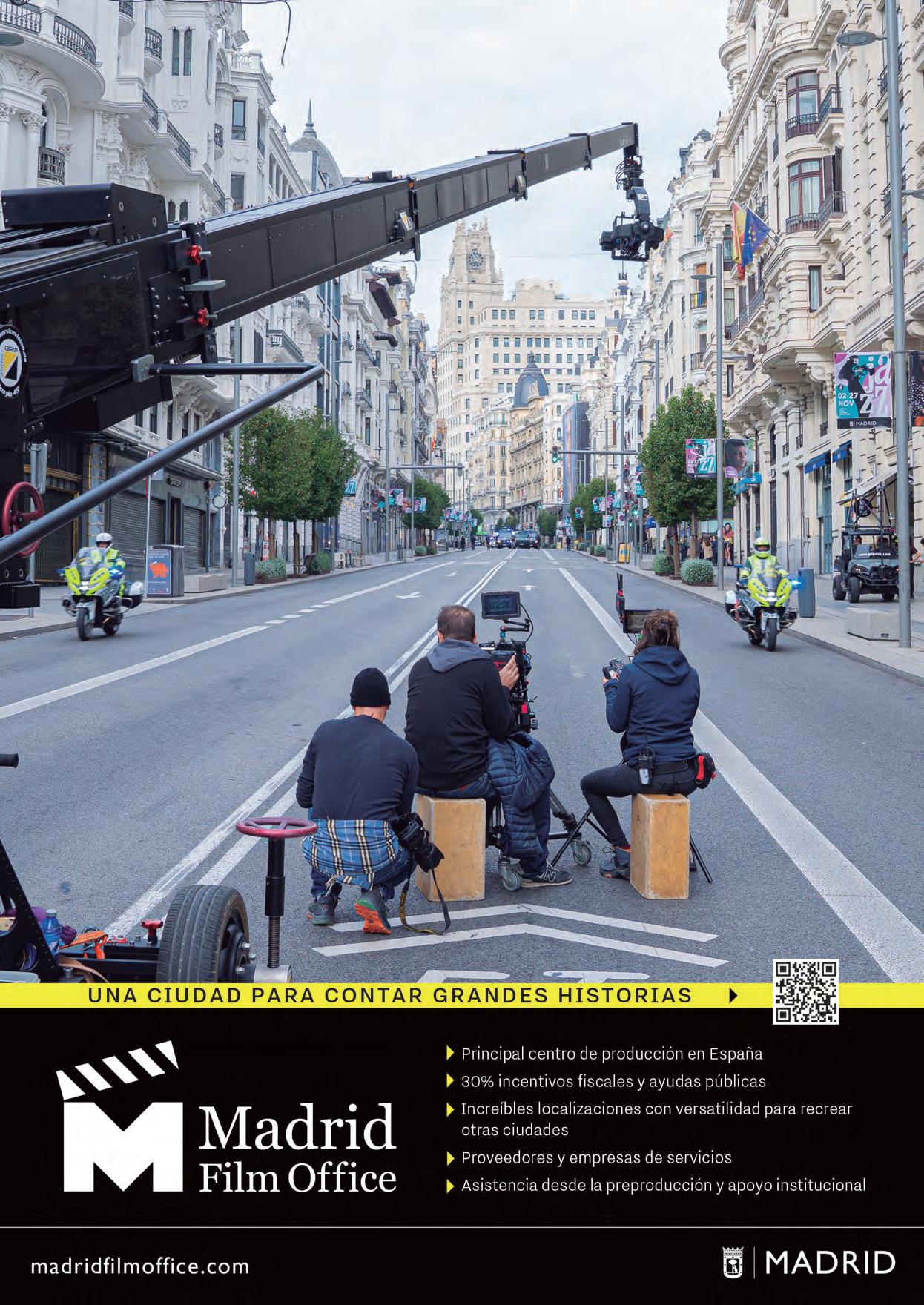

THE USE OF SPANISH LOCATIONS AS FILM DOUBLES IS ONE OF THE GREAT ASSETS THAT SPAIN HAS TO ATTRACT INTERNATIONAL FILMING. DURING THE YEARS, IT HAS HAD A SIGNIFICANT IMPACT ON BOTH THE SCREEN INDUSTRY AND THE LOCAL ECONOMY
Spain is known for its geographical diversity : fantastic natural landscapes that favor exterior scenes, as well as a welcoming climate that also provides a good number of hours of light for long days of filming , which together with the extensive architectural wealth of Spain and the competitive prices that lower production budgets, make Spain a fabulous destination for film shoots from around the world. All of this has allowed many Spanish locations to double for an immense number of international places on the big screen.
The driving force behind this practice being definitively established within Spanish borders was the Hollywood producer Samuel Bronston , who played a crucial role in this process during the 1960s.
Bronston capitalized on the advantages that Spain offered to attract large film shoots, due to the low production costs, combined with a Franco regime eager to improve its international image , which undoubtedly created a perfect breeding ground for the development of large-scale film projects such as King of Kings (1961) or 55 Days at Peking (1963), directed by Nicholas Ray , and El Cid (1961) or The Fall of the Roman Empire (1964), both by Anthony Mann.
The spaguetti western genre deserves a special mention since European locations were used to recreate the old American West. Although born in Italian territory, this genre was filmed insistently in Spain, becoming one of the most emblematic examples of this practice. The Tabernas desert, located in Almería, became the
FER
setting par excellence to recreate this type of movies, but numerous filmings were also carried out in the steppe of the Huesca municipality of Fraga, as well as in the province of Burgos and on the outskirts of Madrid. Directors like Sergio Leone found in these arid expanses the ideal backdrop for their epic films, giving rise to classics like The Good, the Bad and the Ugly (1966). However, the versatility of Spanish landscapes goes far beyond the western. For example, the Mediterranean coast and several islands have served as credible substitutes for North Africa and the Middle East in numerous productions. For the film Lawrence of Arabia (1962), director David Lean used locations in Almería and Seville to recreate the vast Arabian deserts, while in The Wind and the Lion (1975), John Milius transformed

different corners of Andalusia into early Morocco of the 20th century.
Spain’s ability to cinematically disguise is not limited to its natural landscapes. Urban locations like Madrid have demonstrated amazing adaptability. The most famous case is that of Doctor Zhivago (1965), also directed by David Lean, which was filmed mainly in the Madrid neighborhood of Canillas, whose streets and facades underwent a complete metamorphosis to become a convincing version of Moscow. At national level, Captain Alatriste: The Spanish Musketeer (2006), by Agustín Díaz Yanes, got the most out of the Renaissance architecture of the Jaén municipalities of Úbeda and Baeza to portray Madrid in the 17th century.
In order to learn more about this subject, at RUBIK we have contacted some film commissions. First of all, we wanted to know some examples of films that have carried out this practice, doubling for other foreign locations in some places in Spain.

In this sense, Canary Islands Film has provided us with an extensive number of cases that have taken place within the limits of the Canary Islands: “Some examples are Jason Bourne (2016), who recreated Athens and Beirut in the city of Santa Cruz de Tenerife , the fifth season of Money Heist, which doubled for the waters of the Norwegian Sea thanks to an oil platform, Allied (2016), filmed in Las Palmas de Gran Canaria, where Casablanca was recreated in locations such as Plaza de Santa Ana or Parque San Telmo, or Eternals (2021), where Fuerteventura and Lanzarote served to recreate fictional locations from the stories of Mesopotamia”.
There are also other examples: in Rambo: Last Blood (2019), Mexico was recreated in Tenerife and for The Man Who Killed Don Quixote (2018), Fuerteventura doubled for La Mancha.
For its part, the Region of Murcia Film Commission has also provided an extensive list: “In Terminator: Dark Fate (2019), the Mateos neighborhood and several streets in Cartagena, as well as the road that goes to Corvera Airport, became different places in Mexico. For The Promise (2016), Arroz Beach and Cala del Pino, both located in Águilas, simulated an embarkation of Armenian refugees on a French warship, during the Armenian Genocide at the hands of the Ottoman Empire. Cala del Pino served to represent the coast at the foot of Mount Musa Dagh, in the south of presentday Turkey, where Armenian refugees maintained a last defense against the Ottoman troops. In Taken 3 (2015), the San Javier airport became that of Santa Monica, in California, while in Green Zone (2010), the Los Alcázares military base pretends to be Baghdad and the Academy San Javier Air General, Baghdad airport. Finally, in the British production The Garden of Eden (2008), the La Encarnación spa in Los Alcázares becomes the Hotel de Voyageurs, located in Lausanne, Switzerland, and the Archena spa doubles for a hotel in Cannes (France)”.
From Asturias Paraíso Natural Film Commission they give us another example: “ Marrowbone (2017), by Sergio G. Sánchez, was filmed in various locations in Asturias, among which we

find the Arango Palace, in Pravia, Frexulfe Beach, in Navia and the Oviedo Weapons Factory, among others, simulating rural America in 1969”.
The aridity of Murcia’s terrain, as well as the abundance of palm trees mean that we can easily double for the Middle East, Africa or Latin America
When questioned about the versatile capacity of its landscapes and locations when it comes to foster this line of action and making it possible, the Region of Murcia Film Commission believes that “the aridity of the terrain due to its scarce rainfall, as well as the abundance of palm trees in its landscape mean that we can easily find in Murcia places capable of doubling for the Middle East, Africa or Latin America. War scenes, period scenes or science fiction scenes can easily be set in many places. Also the set of beaches that go from the Calblanque Natural Park, through the Portman area, with black sand, and until reaching the coast of Águilas, bring to mind the paradisiacal
beaches of the Caribbean and other countries in the Mediterranean area. Landscapes like the mines of La Unión or Mazarrón can also be sets for science fiction or scenes from the Far West”.
On the other hand, Asturias Paraíso Natural Film Commission emphasizes that “the versatility” of its territory that “has aroused interest and served to recreate coastal towns in the south of England and Wales, Viking villages in northern Europe or the mountains of Armenia during the Roman period, to give some examples”.
Canary Islands Film states along the same lines, stating that “the Canary Islands are widely known for their versatility and their ability to double for other places. Different countries and even continents have been recreated, even within a single island, on many occasions. The Islands are a stronghold of Quaternary forests, with one of the few examples of laurel forest preserved in the world, which led to the recreation of Philippines in 1898 , Our Last Men in the Philippines (2016), or the Amazon in Gold (2017), but it also has salt flats, white sand dunes, cliffs, volcanic landscape, neighborhoods, charming colonial-style towns, cities with modern architecture, industrial ports or impossible roads. To this we must add the great advantage that these very different locations can be found very close to each other. This variety and
proximity of landscapes makes the islands very attractive for the sector, thanks to the fact that it makes the logistics of filming cheaper and simpler”.
Regarding the places in its territory that have not yet been used cinematographically, and the locations that could be recreated in them, the Region of Murcia Film Commission provides some examples: “the Nile River could be recreated in the Ricote Valley, or the Corvera area could double for Jerusalem or Nazareth recreating scenes from the 1st century, a few minutes from Murcia International Airport”.
From the Asturias Paraíso Natural Film Commission , the industrial projects linked to the extinct mining industry stand out, which “are certainly a unique opportunity for the recreation of places with similar characteristics in other territories”.
On the contrary, Canary Islands Film prefer not to provide any new locations, since their landscapes are already being well used, but they do believe that their new Gran Canaria Studios are an ingredient that will significantly contribute to luring new shoots thanks to a total constructed area of approximately 6,000 sqm, made up of two sets of 1,200 sqm and 1,800 sqm with attached facilities.
Finally, we wanted to ask if this dynamic is perceived as a positive factor, or on the contrary, if they would prefer
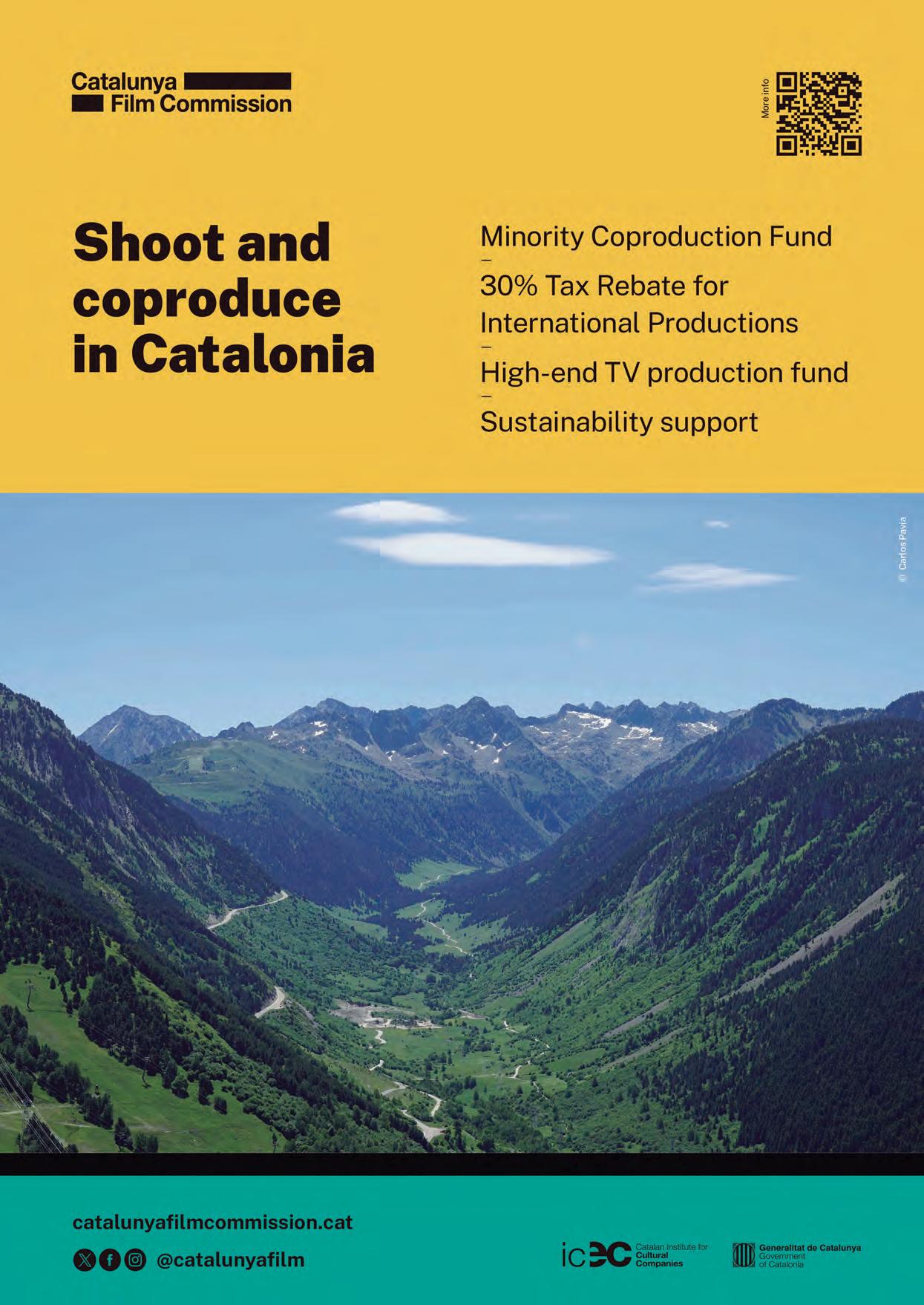
that the locations serve as a set for the place itself and not doubling for other foreign places.
The fact that Canary Islands doubles for other places is wonderful; It generates work, experience and strengthens the industry. But we miss stories in which the Islands are the protagonists.
Regarding this issue, the Region of Murcia Film Commission declares: “ We love showing our environment and having it recognized , there is nothing like seeing it on the big screen. When you have to transform a location to be another part of the planet, it is an exciting challenge. Everything adds up, as long as there are
good practices, and the contributions are beneficial in every way for the entire territory”.
In this regard, Canary Islands Film defends a greater role for its region within fiction : “The fact that Canary Islands doubles for other places is wonderful; It generates work, experience, strengthens the industry and other industries in parallel, but it is true that we miss stories in which the Islands (its landscape, its culture, its people) are the protagonists. Experiences like the Hierro series or, more recently, Weiss & Morales or One less life in the Canary Islands are a true gift.
Canary Islands Film gives some examples of recent Canarian cinema such as The Undergrowth (2024), Killing Crabs (2023) or Rendir los Machos (Our Father) (2021), which are contributing to showing the culture and cinematography of the Canary Islands in the national and international collective imagination. And it is precisely in that line that we concentrate much of our effort from the Government of the Canary Islands; either through subsidies for local creation, or
through promoting the script, as we do with our IsLABentura Canarias initiative, the script laboratory for feature films and TV series about stories and locations from the Islands.”
In the case of Asturias Paraíso Natural Film Commission, they believe that this practice is “a good opportunity to make known certain territories, resources, stories or characters that may be unknown to a large part of the public, or at least, to those who are foreigners” .
“And the fact that this audience may have a subsequent interest in entering the world of ‘screen tourism’ and visiting those sceneries, to enjoy the places they have seen on screen and the real history of the location. It’s a great pairing for us”, he adds.
To sum up, we can conclude that Spanish geographical versatility has left an important mark on world cinema , despite the fact that in most cases viewers are not even aware of it. What it has done has been to encourage the development of an increasingly sophisticated local technical and professional infrastructure.


SOME PEOPLE MAY SEE SPAIN AS A SUNNY SEASIDE PLACE. BUT THE TRUTH IS THAT IT HAS AN EXTREMELY WIDE VARIETY OF LOCATIONS. FOR MANY, IT MAY BE STRIKING BUT SPAIN HAS 2,600 MILES OF MOUNTAINS, BEING THE LONGEST IN EUROPEAN UNION. THAT’S WHY WE WANT TO HIGHLIGHT SOME INTERESTING LOCATIONS OF THIS KIND THROUGHOUT THE COUNTRY. THERE ARE A LOT MORE AMAZING PLACES BUT WE THINK THIS IS A GOOD SAMPLE TO GRASP THE IDEA OF SPAIN AS AN ATTRACTIVE OPPORTUNITY FOR MOUNTAIN SCENES IN FILM AND TV.
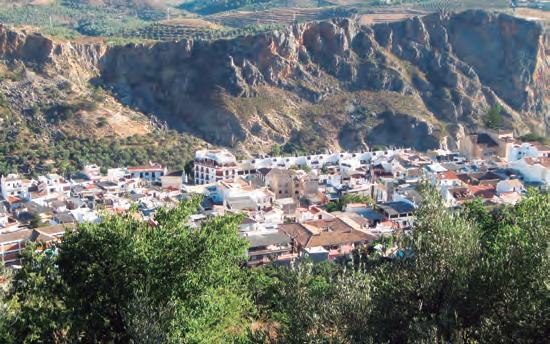
Lanjarón (Granada, Andalusia), in the south of Spain
Contact: Andalucía Film Commission info@andaluciafilm.com
The Alpujarra Granadina offers landscapes of almond trees, vineyards and orchard terraces. Its geography is especially mountainous, occupying most of the southern face of the Sierra Nevada. In the image you can see the town of Lanjarón, known as the Alpujarra Gate. In the area there are many white villages such as Cañar, Soportújar and Carataunas.
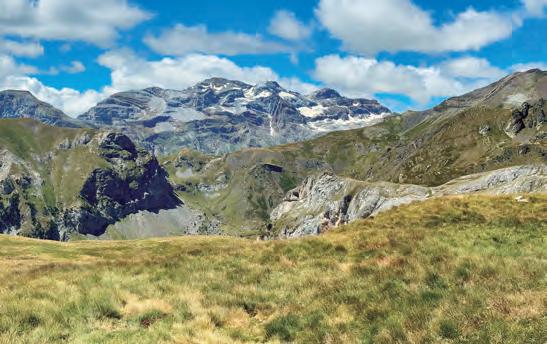
Bielsa (Huesca, Aragón) in the northeast of Spain
Contact: Aragón Film Commission oficina@aragonfilmcommission.es
In the heart of the Aragonese Pyrenees, Pineta Valley, Ruego-Chisagües high mountain track within the municipal forest area of Bielsa. It is on the borders of the Ordesa and Monte Perdido National Park and from a track it can be accessed by vehicles up to 2,600 meters high, with the Monte Perdido Glaciers in front of it.
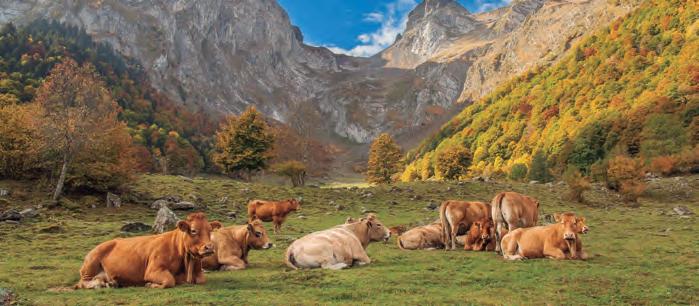
Lleida (Catalonia) in the northeast of Spain
Contact: Catalunya Film Commission cfc@gencat.cat
In the Artiga de Lin valley you will find one of the most beautiful landscapes with the easiest of access in the Aran Valley. Formed by lush forests and full of water that emerges from lots of corners, the landscape is filled at the head of the valley with steep mountains that give the place a great high mountain atmosphere.
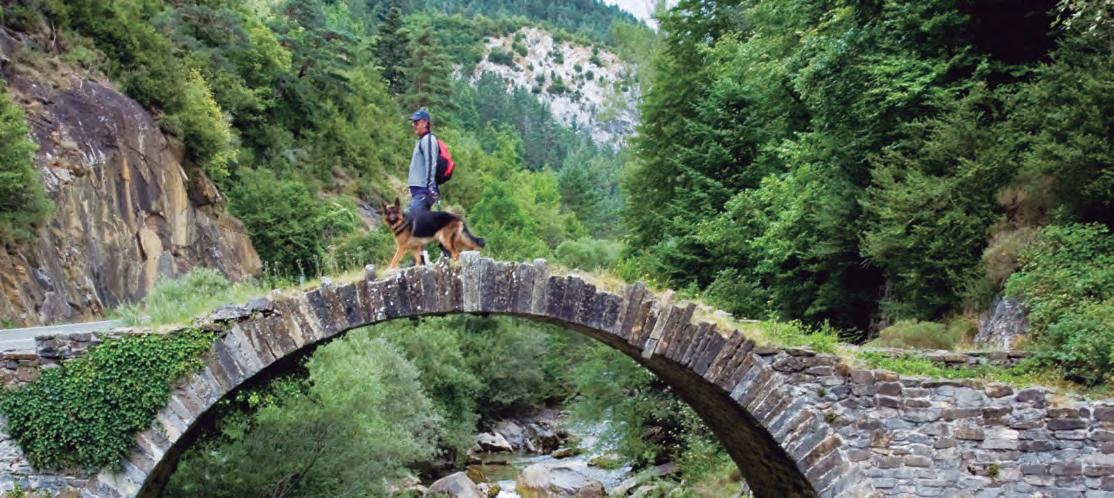
Isaba (Navarre) in the north of Spain - Contact: Navarra Film Commission navarrafilmcommission@nicdo.es
The Belagua valley, in the Isaba district, is the most relevant Pyrenean ecosystem in the Roncal Valley, with heights ranging between 1,100 meters and 2,428 meters. Inside is the Larra Natural Reserve, one of the most impressive karst morphological sites in Europe. In the image, one of the two Romanesque bridges in the area.

Somiedo (Asturias) in the north of Spain
Contact: Asturias Paraíso Natural Film Commission filmcommission@turismoycultura.asturias.es
The Somiedo Natural Park was declared a Biosphere Reserve in 2000. It is one of the most rugged landscapes in northern Spain, due to its slopes from 400 to 2,200 meters. Beech and oak forests predominate and its hallmark is its large, peaceful lakes.

Alicante (Comunitat Valencina) in the southeast of Spain
Contact: Alicante Film Office info@alicantefilmoffice.com
The Maigmó mountain range is a formation with a maximum altitude of 1,296 meters, on the peak of the same name, and occupies an area of approximately 1,280 hectares. On the slopes of Maigmó, the Balcón de Alicante offers exceptional panoramic views, being able to see the entire Alicante coastal strip from Benidorm to Torrevieja. Ciudad de la Luz Film Studios is less than 40 kilometers away.
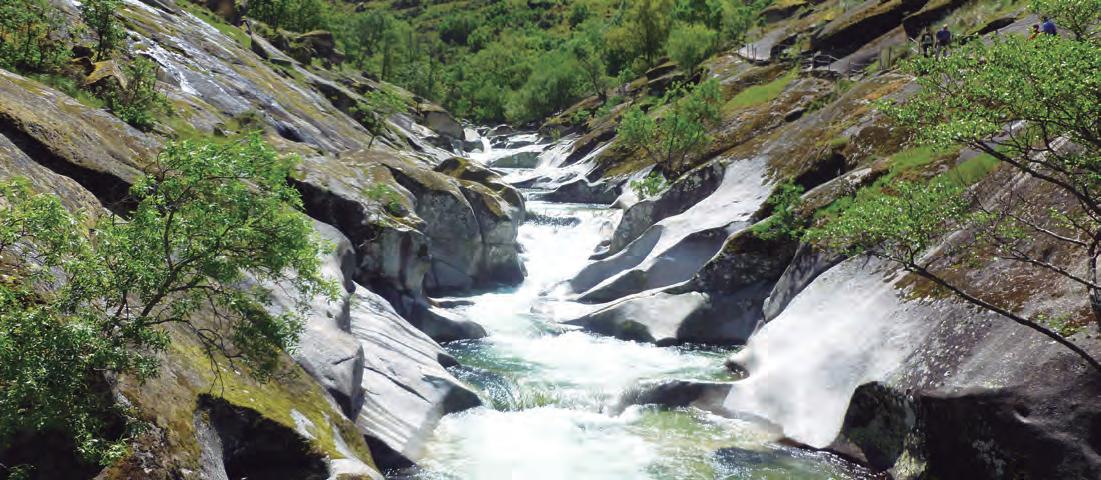
Cáceres (Extremadura) in the southwest of Spain - Contact: Extremadura Film Commission info@extremaduraaudiovisual.com
The Garganta de los Infiernos Natural Reserve has 7,226 hectares and is located in the Jerte Valley region, north of Cáceres. Its main rocks are granites and gneiss. In the image, the area of Los Pilones, large pools excavated in the rock by river erosion. In the Jerte Valley, the possibility of recording its famous cherry blossom trees also stands out.

Madrid Region in the center of Spain
Contact: Film Madrid filmmadrid@madrid.org
La Pedriza is a geological feature on the southern slopes of the Guadarrama mountain range. Access is from Manzanares el Real, a municipality in the northwest of the Community of Madrid. Very popular among rock climbers, it´s a remarkable boulder field of strangely eroded granitic outcrops.
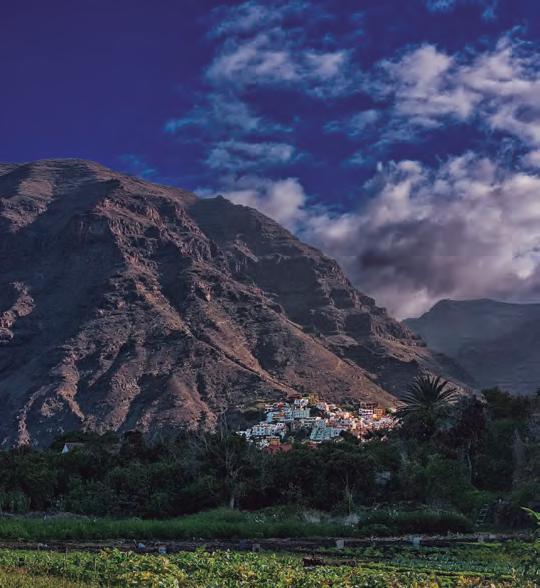
La Gomera (Canary Islands) in the Atlantic Ocean
Contact: La Gomera Film Commission - film@lagomera.es
Located southwest of the island of La Gomera, Valle Gran Rey has an area of 33 km². It sits on the two main mountains that border the Valley, La Merca and Teguerguenche, and its coastal strip offers a series of beaches. The population lives in traditional houses with crop terraces and palm groves in the background. Within this municipality, you can also find the stunning Garajonay National Park.
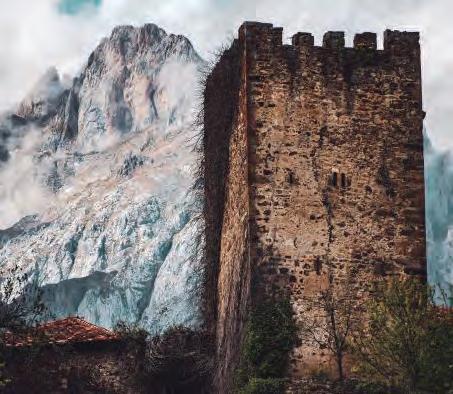
La Liébana (Cantabria) in the north of Spain
Contact: Cantabria Film Commission cantabria.film@srecd.es
Mogrovejo is a village in the municipality of Camaleño, La Liébana, Cantabria. Located at the foot of the Eastern Massif of Picos de Europa at 460 meters above sea level, surrounded by splendid forests. It has the flavor of a traditional town and its ashlar and masonry houses have as a background the peaks of Picos de Europa that seem to protrude from the roofs of their houses.
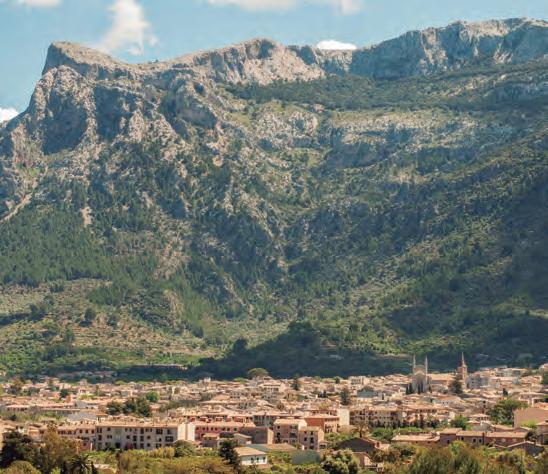
Sóller (Majorca) in the Mediterranean Balearic Islands
Contact: Mallorca Film Commission info@mallorcafilmcommission.net
Sóller Valley is in the middle of the Serra de Tramuntana. Filming here has some other benefits like the town of Sóller, surrounded by orchards of fruit trees and orange trees. It has a historic center of narrow cobbled streets, modernist mansions and traditional Mallorcan houses. A few three kilometers towards the sea, we find the Port de Soller located in the only natural bay in the area.
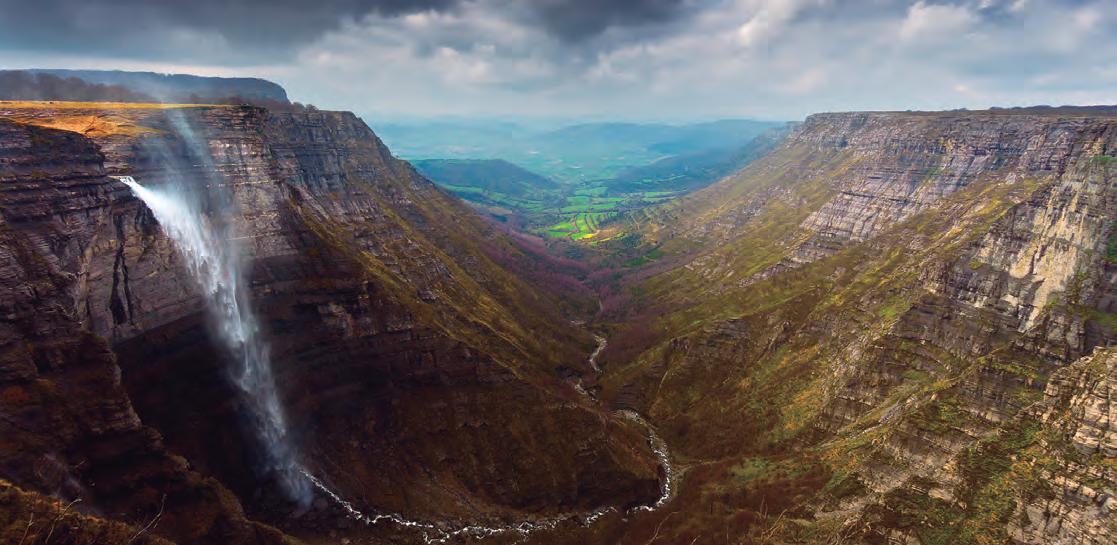
Burgos (Castile and Leon) and Alava (Basque Country) in the north of Spain
Contact: Vitoria-Gasteiz Film Office or Burgos Film Commission filmoffice@vitoria-gasteiz.org and info@burgosfilmcommission.org
The Salto del Nervión is located between the provinces of Burgos and Alava within the natural park of Monte Santiago. This spectacular waterfall, more than 220 meters high, is the highest on the peninsula and the second in Europe. The waterfall originates through the water course formed by the Iturrigutxi, Ajiturri and Urita streams, forming the Delica River.


“THE
RUBIK: What are Spain’s main strenghts at the moment to attract large international filming?
Elisa García Grande: Spain offers a large number of advantages for production companies wishing to shoot in our country: tax incentives are a very important factor, as well as the fast-track process for obtaining work visas for professionals in the sector, which are part of a broad series of improvements approved by the different administrations to support this field.
But I would also like to highlight our network of infrastructures, the high qualification and talent of our workforce, a mature industrial network, the use of cuttingedge technologies, European standards of legal and intellectual protection and our quality of life. To all this, we add a privileged climate, a great diversity of landscapes and, of course, an optimal ecosystem of collaboration and institutional support at the highest level.
We also have a network of specific services for the audiovisual sector, including large studios such as Madrid Content City, the largest production center in the European Union. Or the publicly owned stages distributed throughout the country: Gran Canaria Studios, Ciudad de la Luz Studios in Alicante and the Parc Audiovisual in Catalonia. And soon the new Coruña Inmersive Studio will open in Galicia. All this explains why large European film and TV companies and American streamers trust Spain both for filming and investment.
RUBIK: How competitive is Spain’s fiscal policy and incentives —in terms of attractiveness to international investors such as producers— compared to European neighbors?
E.G.G.: Spain has become a worldrenowned European hub for audiovisual production. Spain offers tax incentives for international shoots in the form of a tax rebate and a tax credit: 30% of the first million euros of expenditure in Spain and 25% after that. There are territories with a

higher refund, such as the Canary Islands (54% of the first million euros, 45% after that) and other territories with tax credits, such as Navarra (up to 50%) or the Basque Country (up to 60%).
The incentive framework in Spain is, in short, very attractive for companies that choose to shoot here, but the incentives must be added to the other positive factors I mentioned before, which together make us a perfect destination for international productions.
RUBIK: Do many international professionals use the Spain Audiovisual Bureau? What is the current state of development of this initiative?
E.G.G.: The Spain Audiovisual Bureau is one of the main tools that have been created and launched thanks to the plan ‘Spain, Audiovisual Hub of Europe’ launched in 2021 by the Spanish government, an endowment of 1,600 million euros of public investment until 2025 to boost our audiovisual sector.
The Spain Audiovisual Bureau is a free assistance service for companies, both

national and foreign, interested in carrying out projects in the audiovisual sector in Spain or in internationalizing their activity outside our borders. This centralized contact point allows any professional to make inquiries through a single window that guarantees a response within a maximum of 48 hours. In the case of initiatives led by foreign companies, a team of expert consultants helps them to understand how the sector works in Spain and the advantages it offers, as well as the steps to follow to develop their audiovisual project in our country. In fact, we have already exceeded one thousand requests that have received assistance through the Bureau since its creation in May 2022, with a very equal percentage between consultations received from Spain and from abroad.
As for the typology of the requests, those related to financing and tax incentives are the most common and specifically, requests on the operation of tax incentives represent 25% of the total.
But it is also very important to use the tool to achieve B2B Talk, that is, to meet Spanish companies. These are requests to connect with Spanish production, post-
production or Spanish audiovisual content companies (mainly international events that want to program Spanish films). These represent 16% of the queries received to date. Thirteen percent requested information on Filming in Spain (locations, visas for mobility and stay of workers in audiovisual projects, infrastructure or studios), while requests for information relevant to Co-Production with Spain reached 9% of the total.
‘Spain, Audiovisual Hub of Europe’ has allowed us, since its launch, to organize more than 130 activities around the world, with more than 2,000 business participations.
ignites’. What are the details of this campaign?
E.G.G.: We are launching this initiative to promote the image of all the sectors that make up the Spanish audiovisual industry, associating them with talent, creativity, know-how, professionalism and excellence. In this way, we promote business opportunities for the sector in a context of strong global competition.
The campaign is articulated through a central piece, the short film “The reason of the accident that caused the fire”, which can be seen on the website spainwheretalentignites.com. Additional content can be found on the site, including interviews with creators, such as Victoria Luengo, Juan Diego Botto, Isabel Coixet, Elena Martín or Rodrigo Sorogoyen. A digital communication strategy has also been launched in networks and new media, and we will be present in some of the main specialized international markets, such as MIPCOM or the American Film Market.
The initiative is part of a broader program of promotion and internationalization of the audiovisual sector, within the framework of the plan ‘Spain, Audiovisual Hub of Europe’
that has allowed us, since its launch, to organize more than 130 activities around the world, with more than 2,000 business participations.
In these three years we spotted the need to strengthen the positioning of the Spanish audiovisual sector as a whole. This is the germ of the campaign, an initiative that uses the audiovisual language itself, showing the ability we have to tell interesting and original stories in an innovative way.
In short, by improving the recognition and reputation of the Spanish audiovisual industry, we favor the sector’s business opportunities in a context of strong global competition. The sector is already competing against the best and we had to be at the same level with our promotional campaigns.
RUBIK: Very recently, ICEX has created the audiovisual antenna in Asia based in Singapore. What is your goal with this?
E.G.G.: Indeed, one of the most important initiatives that we have carried out this year from ICEX-Invest in Spain has been the recent opening of antennas for the audiovisual sector in the economic and commercial offices of Spain in Los Angeles and Singapore. The objective of these antennas is to better understand the American and Asian markets, identifying the main players in the ecosystem and their needs, so that Spain can position itself as the ideal destination to develop its audiovisual projects. Our strategy also includes offering local support to improve the positioning of Spanish companies and talent, organizing activities to strengthen commercial relations in North America and Asia.

In fact, antennas will serve to promote and spread essential data, and any professional will have the opportunity to access them to request accurate information on how to work on a project in Spain from a practical point of view: permits, visas or the advantages of working from here, since our country offers a great attraction for any audiovisual company.
In the specific case of the Singapore antenna, it is already coordinating our participation through our brand Shooting in Spain in the Busan Film Festival (October 2 to 11), a Korean event that we attend for the first time to promote the reasons why Spain can be a strategic partner for Korean producers. And it is also working on attending Gamescom Asia (Singapore, October 17-20), the side event for Southeast Asia organized by the renowned videogame fair Gamescom.
RUBIK: Little by little, we are approaching the end of 2024. What is your assessment of all that has been achieved this year?
E.G.G.: The plan ‘Spain, Audiovisual Hub of Europe’ has started a new era for the audiovisual sector, recognizing it as strategic due to its great potential and its ability to generate a multiplier effect on the rest of the national economy.
From ICEX-Invest in Spain we have strengthened our support for the internationalization of the sector and we will continue to do so. Under our Shooting in Spain brand, we have actively participated in more than 20 professional forums and markets around the world to promote the sector and make first-hand contact with potential investors from all over the world, to whom we detail the advantages and services that have allowed us to be very competitive as a filming and investment destination. In this final stretch of the year we also launched the new edition of the Who is Who Shooting in Spain 2025-2026 Guide, the long-awaited update of this directory that brings together Spanish companies specialized in providing services to international filming. In addition, we continue to strongly promote the Spain Audiovisual Bureau as an essential contact center.
In short, our aim is to continue along these lines, providing services both to international companies interested in investing in our country and to Spanish companies involved in international filming.
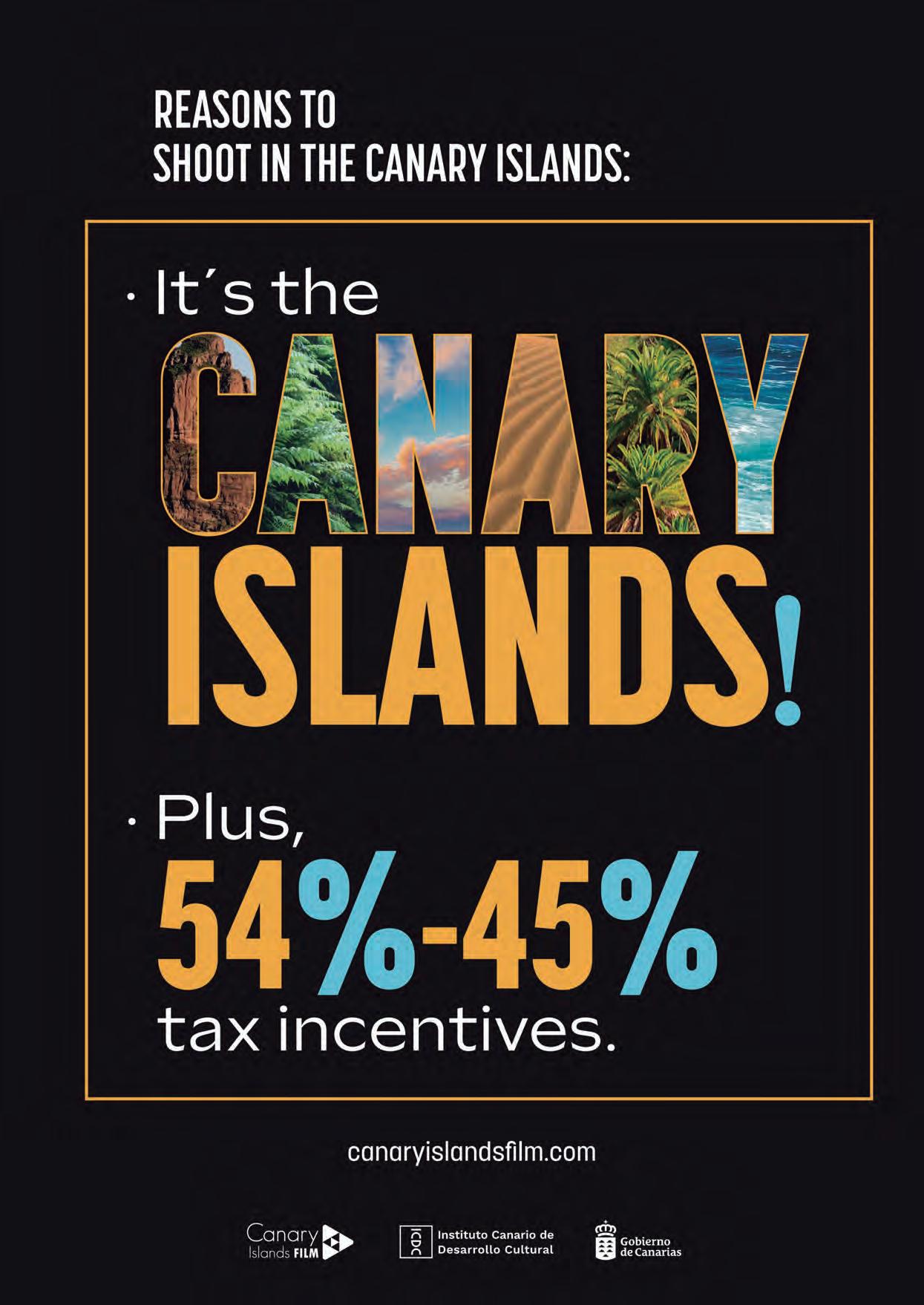

CREATIVE INDUSTRIES CONSULTANCY FIRM OLSBERG•SPI HAS RELEASED THE STUDY ‘ECONOMIC IMPACT OF SPAIN’S REBATES FOR INVESTMENTS IN INTERNATIONAL FILM AND TELEVISION SERIES’, COMMISSIONED BY THE SPAIN FILM COMMISSION. ACCORDING TO THE COMPANY, THE INCENTIVE HAS HAD A VERY POSITIVE IMPACT ON ATTRACTING ADDITIONAL PRODUCTION ACTIVITY AND IT SOLIDIFIES SPAIN’S STATUS AS A PRIME DESTINATION FOR INTERNATIONAL FILMING. LET´S SEE THE DETAILS.
Launched in 2021 by the Spanish Government, Spain Audiovisual Hub initiative implied €1,600 million investment financed by the Spanish Government and the European Union’s NextGenerationEU programme and aimed to increase screen production levels by 30% by 2025.
Spain Film Commission (SFC) received a governmental mandate to develop a set of initiatives aimed at contributing to, along with other public and private efforts, making Spain a leading country iwithin the European Union.
Among these initiatives, and recognising that the lack of reliable data is a weakness
in any project, SFC strategically proposed developing an independent study to provide robust information on the impact that fiscal support policies for international shoots have had on Spain’s economy.
Now, the study has been published, as the result of many months of work driven by the Spain Film Commission with the collaboration of PROFILM, the most important business association in the international production service field.
Olsberg•SPI’s study covers the recent period available for corporate tax matters, 2019-2022. The goal is this document serves as a starting point rather than an endpoint. It should lead to a regular series of high-level
studies to further improve strategies, guide investments, and enhance the qualifications of industry professionals.
SPI engaged with a wide variety of stakeholders, including independent producers and service producers based in Spain, major international content investors, and representatives of the Spanish public administration. The Study analyses the impact of Spain’s international incentive between 2019 and 2022 and examines the wider international film and television series production sector in Spain.

Spain has experienced unprecedented growth – a trend linked to a general worldwide increase in Screen production , but also due to clear political attention, public investment, and the underlying strengths of Spain’s Screen production sector. These strengths include a strong creative and technical skills base, well-developed sector infrastructure, diverse and visually strong filming locations, favourable weather, and support from government and wider public stakeholders. Spain’s ability to provide a hub for the production of high-quality projects for export to global Spanish-speaking audiences is also a key strength.
Since 2015, Spain has offered an incentive for international productions to film in the country. The incentive was amended in 2017, 2020, 2021, and 2022. The 2021 revision, in particular, took place through the introduction of the Spain Audiovisual Hub – a government policy intervention aiming to develop the Screen production sector in Spain.
SPI quantifies the economic contribution to Spain’s economy across three channels of economic impact: direct, indirect, and induced. For each impact channel, SPI estimates the contribution in terms of Gross Value Added (GVA), Full-Time Equivalent (FTE) jobs, and employee compensation.
Data on the total incentivised expenditure on international film and television production in Spain is a key driver for the economic model. However, there is no official or publicly available data in Spain. Consequently, expenditure has been estimated using data collected by SPI from key production and service companies based in Spain, as well as the main international streamers and studios active in the country.
Data was gathered on the total incentivised production expenditure in Spain for 176 international productions. Of these, 165 productions started principal photography between 2019 and 2022, and these are the focus of the analysis. A
minimum of €1,320 million was spent by 165 incentivised international productions in Spain.
These production data show a decline in 2020, attributable to the impact of the COVID-19 pandemic, from €343.3 million in 2019 to €145.9 million in 2020. Production expenditure increased yearly since 2020, with levels surpassing pre-COVID-19 records in 2022. Total production expenditure in 2022 was more than 50% higher than in 2019, while production volumes were up 33%.
From 2019 to 2022, incentivised international film and television production generated an estimated minimum of €1,795 million in GVA contributions to Spain’s economy. This is the sum across all impact channels (direct, indirect, and induced), and so captures the knock-on impacts on different goods and services across Spain’s economy.
This level of activity generated an estimated €989.9 million in total cumulative employee compensation for those working in Spain across the country’s broader economy over the same period.
Regarding employment, SPI estimates that incentivised international film and television productions supported an average of 7,080 FTE jobs across Spain’s wider economy each year between 2019 and 2022.
Spain’s international incentive has had a very positive impact on attracting additional production activity. Data show that 70% of expenditure would not have occurred in Spain if no international incentive had existed
Finally, between 2019 and 2022, the overall GVA RoI was 9.0, meaning that for every €1 invested through the programme, the benefit to the Spanish economy was €9 in terms of additional economic value from direct, indirect, and induced effects. Of this, €2.20 was attributable to the direct impact channel alone.
According to SPI, Spain’s international incentive has had a very positive impact on attracting additional production activity. Data show that 70% of expenditure would not have occurred in Spain if no international incentive had existed. In contrast, only 30% of the initially planned expenditure would have been undertaken in Spain without the incentive.
Spain’s ability to provide a hub for the production of highquality projects for export to global Spanish-speaking audiences is a key strength.
In attracting a significant number of international productions to the country, the
international incentive has also increased the demand for crew. Due to the increased volume of work brought by the incentive, international service production companies have grown both in terms of budgets and the number of projects managed per year, which also means an increase in staff.
International investment attracted by the international incentive also contributes to studio infrastructure growth, while consultees reported that local crew members have learned new ways of working thanks to the international productions shot in Spain.
There is an overall perception that Spanish crews are knowledgeable and highly skilled – and the skill level is projected to grow even further given an expansion of film schools and relevant university courses.
While the international incentive has had a very positive impact on Spain’s screen production sector and the economy, consultees have reported some challenges.
For example, producers expressed concern over the ambiguity surrounding the eligibility of expenditures, which can be open to some interpretation, and over the time required to receive responses on these matters. Stakeholders called for a stronger collaboration between the different agencies involved in the programme (Agencia Tributaria, Ministerio de Cultura, Ministerio de Asuntos Económicos y Transformación Digital) and tighter interaction with the Screen production sector.
Consultees reported that the incentive application process is simple, and the requirements are straightforward. However, the system does carry an inherent risk for Spanish service companies that is not present in all competitor systems. Spain’s tax authority does not require companies that apply for the incentive to provide any audits as a condition of application and does not provide any up-front certification for applications. This means that the tax authority is able to reopen cases years after the incentive payment has been accessed, with liability on the service production company that originally submitted the application.
Some systems require a third-party audit as a condition of application. While
this may not preclude authorities from re-examining an incentive application or payment at a later date if new information is made available, it does de-risk the process.
For every €1 invested through the programme, the benefit to the Spanish economy was €9 in terms of additional economic value from direct, indirect, and induced effects.
In addition, given that incentive applications can only be initiated at the start of the fiscal year subsequent to production taking place, incentive payments can occur significantly after production. This is a key issue for smaller producers/service companies with limited cash flow and even for larger companies who can cashflow this timeframe internally.
There is an overall perception that Spanish crews are knowledgeable and highly skilled – and
the skill level is projected to grow even further
Finally, SPI recommends reviewing and enhancing the data monitoring of the incentive programme. The data should include, at a minimum, the incentive amount paid to applicants, associated eligible spend, and the date of payment. Ideally, the data should also include the total production spend in the country and the year or years in which the production was undertaken. The collection and publication of these data will be essential for the programme’s transparency and will allow parties to evaluate the impact of the incentive more robustly in future years.


THIS YEAR, OLSBERG•SPI, IN COLLABORATION WITH THE ASSOCIATION OF FILM COMMISSIONERS INTERNATIONAL (AFCI), HAS UPDATED ITS STUDY ‘BEST PRACTICE IN SCREEN SECTOR DEVELOPMENT’, WHICH HIGHLIGHTS SUCCESSFUL POLICIES, STRATEGIES, AND OTHER INTERVENTIONS TO DRIVE SUSTAINABLE GROWTH IN THE SCREEN PRODUCTION. HERE ARE SOME OF THE STUDY’S KEY FINDINGS.
In 2019, the Association of Film Commissioners International (AFCI) and consultancy firm Olsberg•SPI published this innovative study for the Screen sector development. Five years on, there has been unprecedented global growth in Screen production, as well as significant changes and challenges, including the global COVID19 pandemic, labour strikes in the US, and rapid technological advancements Through analysis of several areas, the study examines the strategies and policies that have been implemented by established and emerging jurisdictions around the world to maximise Screen production activity.
Online streaming providers have driven increased investment in global Screen content, largely as part of localised production strategies. Localised productions are a valuable driver to connect with audiences and increase subscriber levels in new and emerging jurisdictions alike.
This trend is expected to continue, with spend on global streaming anticipated to increase by 44% between 2023 and 2028 Emerging jurisdictions in Central and South America, Sub-Saharan Africa and Central and Eastern Europe are expected to drive the highest growth in content spend.
The study divides Best Practice into Formal (legislation,policies,strategies and funding to increase capacity and quality)
and Informal (processes and procedures that reduce difficulties and friction for filmmakers at all points during the production process
Production incentives are one of the most popular policy tools used by governments to invest and drive Screen production activity. They are flexible systems that can enable jurisdictions to stimulate growth in domestic production as well as attract international investment
At present, there are more than 100 active production incentives worldwide and new programmes are introduced each

year. Production incentives are calculated as a percentage of a production’s eligible expenditure. Incentive rates are usually around 30% but this differs significantly between jurisdictions.
A recent study by the European Audiovisual Observatory found that production incentives accounted for 21% of European film financing in 2021.
Successful production incentives are simple, predictable, and transparent. This is a core best practice and cuts across the design and operation of production incentives
An uncapped production incentive ensures equal access to all applicants as there is no budgetary limit to the amount of production that can access the system. However, where an overall incentive cap is required, the usage of additional per-project caps can ensure access for producers while managing the scale of a production incentive
Incentive agencies should set high service standards for incentive processes, ensuring applications are turned around quickly and clearly. Administrators should also be
responsive to queries from applicants. This ensures that production incentives match the pace of productions, which operate under tight deadlines.
Producers consider qualifying expenditure, caps, and other key rules when budgeting production incentives. Production incentives which can be applied to ‘abovethe-line’ (e.g. director and cast) costs are therefore more attractive to producers. t is important that the production incentive is promoted in a clear way that reflects its true value, as headline % rates can be misleading if only a small part of the budget is eligible.
Increasingly, production incentives offer ‘uplifts’ which provide a higher incentive value to productions which meet additional, optional criteria. These can focus on driving production expenditure into areas outside of established production hubs, infrastructure development, sustainable filming practices, local workforce development, or a range of other areas. It is critical that uplifts are attainable and effective. The eligibility requirements for producers should be clear, and the requirements of the uplift should
have a meaningful impact on the desired objective.
The role of a production incentive is to stimulate production expenditure While authorities may seek to ‘guarantee’ cultural or tourism impacts by requesting script or location changes, or approval, any interference in the creative process will discourage production
In return for production incentives, authorities can require productions to provide data, play a role in workforce development, or engage in other ways. This exchange is an important part of successful production incentives but should be designed in a flexible way that does not discourage productions, or place onerous burdens on smaller / domestic projects.
Production incentives should be predictable for producers, and if all terms of the production incentive are met, it should be the highest priority to ensure payment is made in a reasonable timeframe. Consistent payments build trust in a jurisdiction, while nonpayment can result in longterm reputational damage.
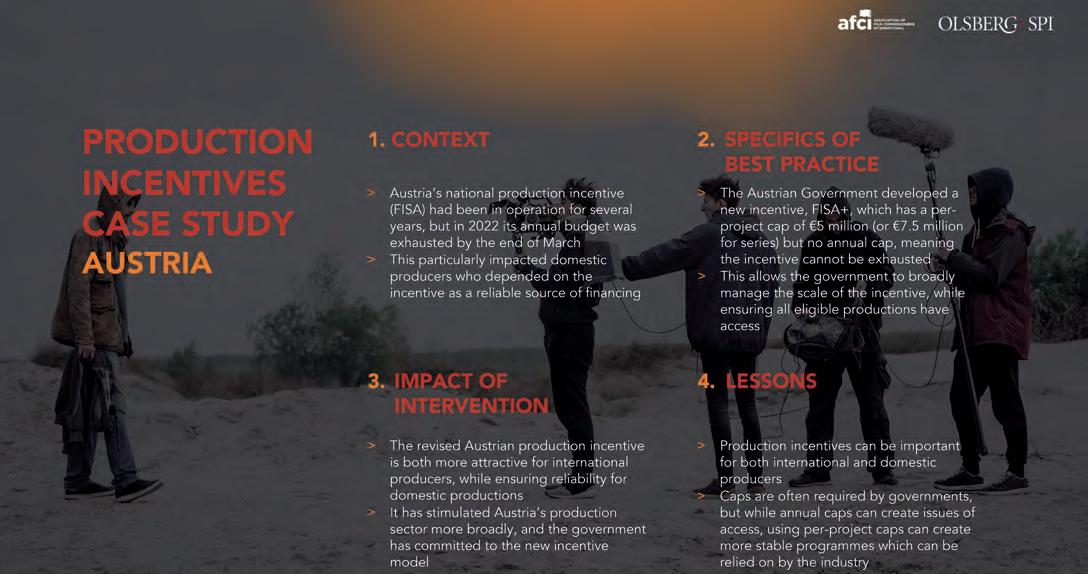
Screen productions employ a range of skilled workers, from performers to carpenters, electricians, to drone operators. These jobs are highly specialised and technical, with the skills often developed over years of on-set experience.
There is a recognised need to effectively grow workforce capacity in the Screen production sector. This typically relates to increasing the depth of crew in the jurisdiction, sharpening skill sets, and improving workforce quality and suitability for large-scale, incoming productions
The pool of workers in a jurisdiction must be sufficient for ongoing production activity. Shallow crew depth can make it challenging for producers to find adequate skills and can undermine the attractiveness of a jurisdiction for Screen production activity
Crew quality is just as important as worker volume. Inefficiency or poor-quality skills can hamper a jurisdiction’s ability to retain and expand production activity
Heavy focus on only one aspect of workforce development, such as entry-level skills development or traineeships, instead of developing holistic strategies can limit the sustainable development of a jurisdiction and will likely lead to capacity concern+s at higher grades or in departments that do not receive adequate attention for development
Lack of alignment with international skills, standards, and working methods
will result in workforce development that is of limited effectiveness for large-scale, incoming productions
Successful production incentives are simple, predictable, and transparent. An uncapped production incentive ensures equal access to all applicants as there is no budgetary limit to the amount of production that can access the system.
Capital investment in infrastructure is a core part of developing a Screen production sector, ranging from filming equipment (lighting and grip) which can be hired out to productions, to soundstage developments
Jurisdictions can capture more production expenditure locally by ensuring a well-developed infrastructure offer. However, a jurisdiction’s infrastructure should be proportionate to its size, and informed by clear demand from producers
In stable jurisdictions with rising production levels, investment in infrastructure is usually driven by the private sector. However, governments play an important role in creating favourable
conditions for this investment– for example, by offering production incentives or enabling infrastructure developments to progress through planning systems
There are also examples of governments directly investing in infrastructure projects. The most successful public interventions in this area have responded to a clearly identified market failure.
In emerging jurisdictions, there is lower demand for studio infrastructure than there is for local crew or production incentives, so public funding should be directed to more impactful areas in the short term. Public or private investment in studio infrastructure should be made at the appropriate stage of sector development when there is clear evidence of demand.
Not all productions require high-end soundstages, and producers are often able to use converted warehouses (or similar) in place of purpose-built spaces. This can allow jurisdictions to attract studiobased productions without making significant infrastructure investments.
Governments can support the industry by identifying potential sites for pop-ups. While governments can directly invest in infrastructure, they can also support infrastructure development in other ways, for example: ensuring the relevant zoning / planning regime encourages potential developments. Also by providing a stable and trusted production incentive, and committing to workforce development, or by identifying potential sites for pop-up studios
Most productions require relatively generic, practical stage facilities. Aiming to anticipate future demand through investment in specialist infrastructure (e.g. virtual production facilities) can result in a less attractive offer in the near term
While mechanisms such as production incentives and workforce development are critical for ensuring that jurisdictions are globally competitive, such measures must operate within a film-friendly production environment.
This is an umbrella term that refers to the ease with which a production can take place in a accessibility, and communication reputation. jurisdiction, including the operations and functionalities of all services and vendors as well as travel,
Multiple inputs contribute to a jurisdiction’s perceived film-friendliness; therefore, it is fundamental that, led by a film commission, a consensus is forged among key partners to work together to ensure the Screen production.
Establishing a formalised network of verified film-friendly partners is key to the efficient facilitation of productions and to ensuring and advocating for the shared value of the Screen production sector. Such a network helps streamline the experience for productions by arranging the needed requirements in a clear and efficient way.
Smooth facilitation of filming is essential to providing the most film-friendly environment. As an integral part of this, filming permits must be straightforward and quick to access. Film commissions can lead or advise on the creation and implementation of cohesive permitting systems. Most productions utilise international labour, talent and/or filming equipment; all related processes and legislation must be as simple and streamlined as possible. Inconvenient or difficult processes for international and domestic travel, including visa systems, can discourage or disrupt productions that work on tight deadlines
Diversity, equity and inclusion (DEI) refers to efforts to improve access and
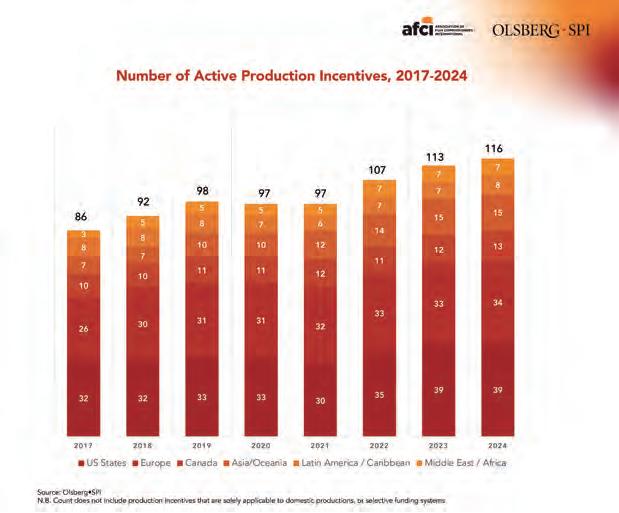
participation of traditionally underrepresented groups in the Screen production sector Many jurisdictions recognise the need for targeted, positive practices towards DEI goals.
However, increased representation may not also translate to diversity in leadership roles,equity in career progression, or in pay. DEI considerations must find a balance between addressing the distinct priorities of minority groups, while ensuring DEI strategies are integrated with the policies and plans for the wider Screen production sector workforce.
Regarding sustainability, a more significant scale of awareness and adoption
of sustainable practices is needed to make meaningful change, requiring all sectors across varying jurisdictions to prioritise this shift
The Screen production sector has an impact on the environment with one average tentpole film production (a film with a budget of over US$70 million) generating 2,840 tonnes of CO2e, the equivalent amount absorbed by 3,709 acres of forest in a year.
Industry requires support, guidance and, most importantly, tangible mechanisms and tools to ensure sustainable practices are adopted efficiently across the production ecosystem.
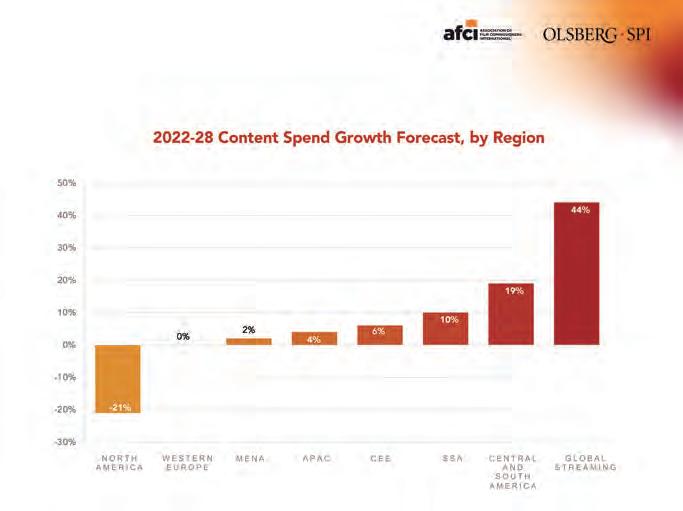
THE LATEST MARVEL SUPERHERO MOVIE, VENOM: THE LAST DANCE, IS COMING TO CINEMAS. IT´S A BLOCKBUSTER FILMED IN SPAIN, ALTHOUGH THE STORY IS SET IN MEXICO. THIS PROJECT HAS BEEN THE GREAT BAPTISM OF FIRE OF THE NEW PHASE OF THE CIUDAD DE LA LUZ FILM STUDIOS. THE FILM, WHICH HAD THE SERVICE PRODUCTION OF SUR-FILM, WAS ALSO FILMED IN OTHER AREAS OF ALICANTE, AS WELL AS IN CARTAGENA AND ALMERÍA.

In this edition of RUBIK we publish an article about the phenomenon of doubling or how some locations are used to recreate other places. In this context, the amazing variety of locations –in a a small surface area– that Spain provides makes it a very versatile filming destination.
Precisely, here we have a case study that proves this statement. At the end of October, Venom: The Last Dance arrives in theaters, a production by Columbia Pictures (Sony) and Marvel Studios that collaborated in Spain with one of the most important service production companies, Sur-Film, to successfully carry out the job.
The film, despite being set in Mexico, was filmed in Spain. The Ciudad de la Luz Film Studios were the epicenter of the filming but the cameras also rolled in other areas of Alicante, as well as in other regions, such as Cartagena (Murcia) and Almería (Andalusia).
We are talking about a major Hollywood production , in this case starring Tom Hardy, Chiwetel Ejiofor, Juno Temple, Rhys Ifans, Stephen Graham, Peggy Lu and Alanna Ubach.
The third installment dedicated to this famous Spider-Man villain will close the trilogy with Tom Hardy. Eddie and Venom are on the run. Pursued by their respective worlds and increasingly surrounded, the duo is forced to make a devastating decision that will bring the curtain down on Venom and Eddie’s last dance.
Written and directed by Kelly Marcel, based on a story by Hardy and Marcel, the film is produced by Avi Arad, Matt Tolmach, Amy Pascal, Kelly Marcel, Tom Hardy and Hutch Parker. Due to SAG-AFTRA strike, the production was halted and resumed a few months later.
The reopening of the Ciudad de la Luz Film Studios has been great news for the screen industry in Spain, as it provides a production hub of the highest international level.
In this new era for the studios, hosting the filming of a production of the magnitude of Venom: The Last Dance has been a blessing to show that they are back on top form.
At RUBIK we have talked to the managing director of Ciudad de la Luz, Fermín Crespo , who admits that this filming was “a very important test” because it was “a very relevant production”.
“Large productions are demanding in that they not only demand that the facilities be in perfect condition, but also in what has to do with daily activity, that you have to be resolving issues every day . The producers themselves have said that they are very satisfied with how it worked,” says Crespo.

Crespo assures that there was “great” connection with the American producers and with the service company, Sur-Film, which is “very used to working in many spaces” and that “all the provider companies responded very well”.
A blockbuster of this size is, without a doubt, a challenge. “It forced us into very diverse scenarios. They filmed at night practically always and the infrastructure they set up was enormous, because they also worked in nearby locations and we were in permanent collaboration so that everything was as easy as possible,” admits Crespo.
In that sense, it must be said that the film not shot in the studios but they recorded scenes in the surroundings, such as the Balcón de Alicante and other places.
The economic impact in Alicante of the third installment of Venom was very notable, as it generated a total investment in the territory of 35 million euros. It involved the hiring of some 570 people, with a labor expense of more than 2.2 million euros,
more than 22,300 overnight stays and the production required services and goods from 325 different suppliers.
Another benefit related to filming in Spain is the existing ethnic diversity, with a significant percentage of the immigrant population, especially when it comes to reflecting Latin American stories. In the case of Venom: The Last Dance, the participation of dozens of extras of all ages was required.
As highlighted by the Minister of Innovation, Industry, Commerce and Tourism, Nuria Montes, this filming is a great step in its strategy with this sector: “The Generalitat Valenciana has strongly committed to promoting the screen industry and attracting international and national filming to the Ciudad de la Luz and the rest of the region”.
Although the bulk of filming took place in Alicante, other territories in
Spain joined in to recreate Mexico in Venom: The Last Dance.
One of the most interesting cases is that Los Mateos neighborhood in Cartagena (Murcia ) was used to double for a Mexican village. Something that had already happened with Terminator: Dark Fate. The production also filmed several shots of the Calblanque beaches. According to estimated expenses, the filming in Cartagena left half a million euros in the area in the three days the shoot lasted.
Finally, we must add the filming that took place in Almería , specifically in the Tabernas Desert, which was the setting for a significant action scene. We have to keep in mind that Tabernas is one of the most legendary places in Spain for international filming –its connection with the spaghetti western being especially well known–.
History of Cinema that, luckily, is still very much alive.
THE DANISH DIRECTOR, WHOSE ROMANTIC COMEDY TOSCANA MADE A BIG SPLASH ON NETFLIX, RANKING AMONG THE MOST-WATCHED CONTENT WORLDWIDE FOR SEVERAL WEEKS, HAS BEEN FILMING HIS NEXT MOVIE FOR NETFLIX (BY DRIVE STUDIOS IN COPRODUCTION WITH ROCKET ROAD PICTURES AND NORDISK FILM DISTRIBUTION) IN MALAGA, IN COLLABORATION WITH THE SPANISH PRODUCTION COMPANY ÁNIMA STILLKING. WE REACHED HIM TO LEARN ABOUT HIS EXPERIENCE FILMING IN SPAIN OVER THE PAST FEW WEEKS.
MIGUEL VARELA
Rubik - Can you tell us about your new project, Mango? What is the story behind it, and what inspired you to direct this film?
Mehdi Avaz: On a trip to Malaga last year, writing another feature, I was on a trip to a finga and a Mango plantation and I fell in love with the scenery, the atmosphere, and right then and there the idea to the film surfaced.

Rubik: Why did you choose Spain as the setting for Mango? What does the country offer to the story or the production that makes it the ideal location?
M. A.: The story was central for the choice - since the idea was directly inspired by the unique landscapes and beautiful scenery, the choice was already very clear from the beginning of the film. On top of that Spain has a well-established film industry, offering production incentives, experienced crews, and world-class facilities. This makes
it an attractive destination from a logistical perspective for international filmmakers.
Rubik: How has your experience been working in Spain? Have there been any unique advantages compared to shooting in other countries?
M. A.: One of the major benefits of shooting in Spain is the availability of stunning, diverse locations. Malaga and the surrounding areas offer a unique scenery that was absolutely the essence of the
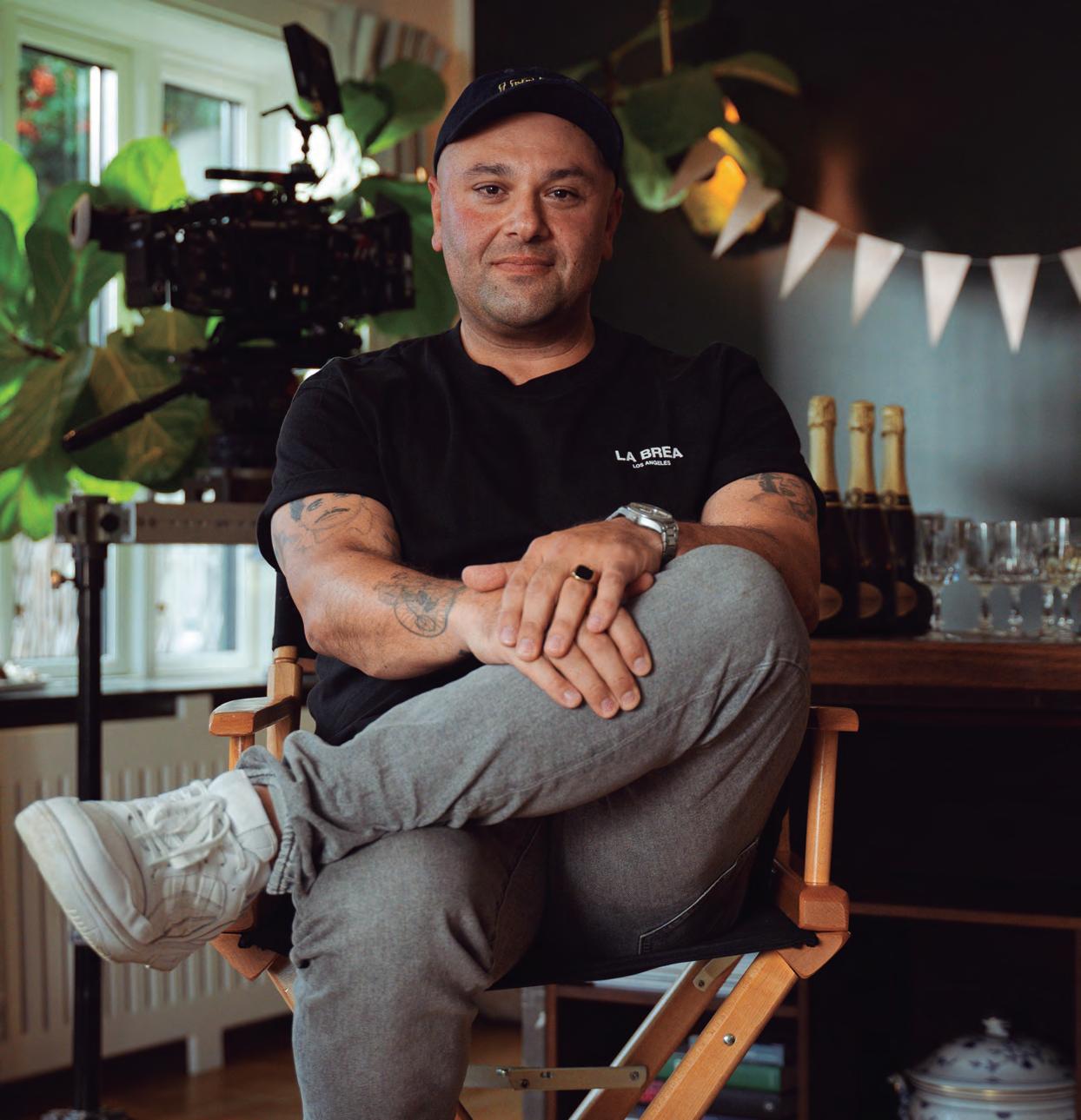
film. Spain’s favorable climate, allows for extended shooting periods with less concern about weather disruptions. The natural light is a key advantage, especially for outdoor scenes, providing a warm, golden quality that enhances the cinematography.
Rubik: You’re collaborating with the Spanish service production company Ánima Stillking for this project. How did that partnership influence the production process, and what did it bring to the film?
M. A.: The partnership with Ánima Stillking has been pivotal to the success of Mango. Their local expertise, resourcefulness, and creative input have not only elevated the quality of the production but also ensured that the film maintains its authenticity and vision while efficiently navigating the logistical complexities of filming in Spain.
Rubik: Romantic comedies seem to be produced less frequently for the cinema
nowadays. Why do you think this genre has seen a decline in theaters?
M. A.: While rom-coms may be less frequent in cinemas, they are still very much alive on streaming platforms, where they continue to evolve and find new ways to connect with audiences. I am happy that Netflix believes in me and Mango and the romantic feel good genre in general. I believe the genre is as much loved by audiences around the world today as they were in the 90s and 2000s .

Events like Shooting Locations Marketplace put location managers in the spotlight, but the truth is, despite its huge impact on what we watch on the screen in films and TV series, it´s a position still not very well known. RUBIK has interviewed John Rakich, president of Location Managers Guild International (LMGI), to learn more about what they do.
RUBIK: LMGI was founded in 2003. What is the association’s main goal?
John Rakich: The main goal of the Location Managers Guild International (LMGI) is to promote the recognition and appreciation of location professionals, including location managers and scouts, as an integral part of the filmmaking and production process.
LMGI strives to elevate the craft of location management and scouting to an art form by fostering professional development, advocating for the interests of its members, building relationships with other industry organizations., networking opportunities, and the importance of unique shooting locations in storytelling.
RUBIK: Most of the members are from the USA, Canada and the United Kingdom, I think. Do you want to expand the reach of your association to other territories?
J.R.: Absolutely, expanding the reach of the LMGI to other territories is one of our key priorities. While a significant portion of our membership comes from the USA, Canada, and the United Kingdom, we are seeing exciting growth in emerging areas such as Australia and other regions.
Location professionals in these areas are playing a vital role in film and television production, and we are committed to supporting and representing them globally. By increasing our outreach, we can create stronger connections, share resources, and elevate the craft of location management in diverse regions. This expansion benefits the Guild and enriches the global production community as a whole
“LOCATION MANAGERS ARE ESSENTIAL BUT THERE’S STILL A NEED FOR BETTER
RUBIK: What are the main activities you do in LMGI and your top priorities in terms of objectives?
J.R.: We as an organization we focus supporting and promoting our membership of location managers and scouts. Our main activities include hosting the annual LMGI Awards, offering networking opportunities, and providing educational resources through events and our quarterly Compass magazine.
Our top priorities are to expand globally to build a strong community where members can connect and grow, all the while advocating for location professionals to ensure their contributions are recognized by providing professional development through workshops and panels. This is all with the goal to elevate the role of location professionals and strengthen the global production industry.
A significant portion of our membership comes from the USA, Canada, and the United Kingdom. Expanding the reach of the LMGI to other territories is one of our key priorities.
RUBIK: Location manager is an essential position in the screen industry but it´s still a figure that needs a more solid standardization about the labor conditions and the number of people needed for this department, right?
J.R.: Yes, that’s true. While Location Managers are essential, there’s still a need for better standardization of labor conditions and clearer guidelines on staffing.
The demands on location teams can vary, and more consistent standards would ensure they have the right support. This would improve both efficiency and the quality of the work across productions.
RUBIK: Location Managers are deeply rooted to Production but also the Art Department. What are the main attributes required for this position?
J.R.: Location Managers play a key role in both Production and the Art Department, so the position requires a unique blend of skills. The main attributes include a creative vision to understand the director’s and production designer’s vision to find locations that enhance the story and the script.
Organizational skills in managing logistics, permits, budgets, and schedules to ensure smooth operations on location as well as problem solving to be able to address any challenges that might come up is another. Communication is key, to be able to collaborate effectively with various departments, local authorities, and property owners.
Then finally I would say its flexibility, the ability to adapt to the changing needs of a production while staying calm under pressure.
RUBIK: Location managers work a lot with Film Commissions. Is your work easier now with the grow of these bodies especially in terms of legal issues and permits?
J.R.: Yes, working with Film Commissions has definitely made things easier, especially as more of them have grown and become established. They’re a huge help with legal issues, permits, and navigating local regulations, which can otherwise be really time-consuming.
Film Commissions also offer valuable local knowledge, connect productions with resources, and often streamline processes, making it much smoother for Location Managers to focus on the creative and logistical aspects of their job.
RUBIK: Is the work for a Location Manager going to change a lot with technology? First of all in terms of scouting but also when it comes to what Virtual Production might affect...
J.R.: Yes, technology is definitely changing things for Location Managers. There are tools like drones, 3D mapping which are useful and then technologies like virtual reality, which can help explore locations remotely in early stages of preproduction.
Virtual Production although still in the early stages is also having an slight impact. While real locations will always matter, digital environments are becoming more common. This means Location Managers will work more closely with VFX teams and adapt to a mix of real and virtual settings, but the job remains essential as even with virtual production there will be a need to photograph or capture an actual real world location that someone needs to go out to find.
RUBIK: Producers are looking for places with the best tax incentives. Do location managers have to ‘fight’ a lot with them to convince them about the goodness of a location for the film or TV series when it doesn´t have great incentives?
J.R.: It can be a challenge, but it’s less about “fighting” and more about presenting the full value of a location. While tax incentives are a big factor for producers, a great location can offer things that incentives can’t—like unique scenery, authenticity, or logistical benefits that can actually save time and money in the long run.
Location Managers often have to make the case that the creative advantages and practicality of a spot can outweigh the financial incentives elsewhere, especially when it’s perfect for the project. It’s about finding the right balance between budget and vision
Film Commissions offer valuable local knowledge, connect productions with resources, and often streamline processes, making it much smoother for Location Managers to focus on the creative and logistical aspects
RUBIK: You have attended the first editions of Shooting Locations Marketplace. What do you think about this event where everything revolves around location managers?

J.R.: Shooting Locations Marketplace stands out as a premier event for the region and beyond where networking takes center stage, offering an unparalleled opportunity for location managers to connect with key industry players. From the moment I attended the first year, it was clear that this event is designed to foster meaningful relationships with film commissions, service providers, and other professionals who are vital to the success of location-based work.
The focused environment allows for deep, productive conversations, laying the groundwork for collaborations that can last years. It’s more than just an exhibition—it’s a hub for building the professional networks that drive our industry forward as this is so much at its core a business built on relationships.
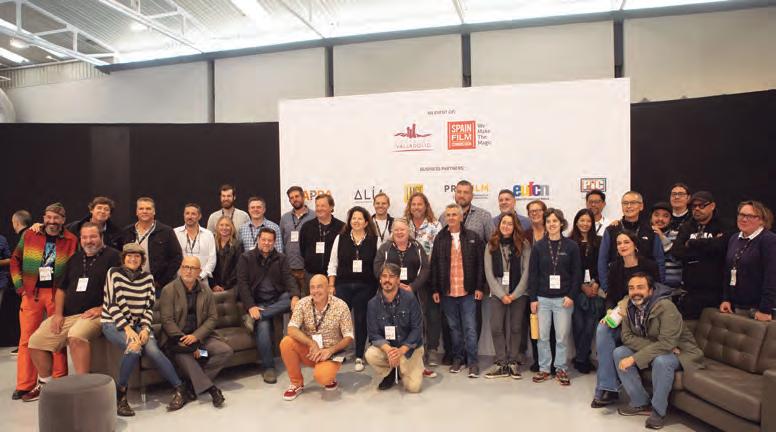
Spain is an incredible filming destination. Its biggest strengths are the sheer variety of landscapes, from stunning beaches to historic cities and dramatic mountains, all within close proximity.
RUBIK: What´s your opinion of Spain as a filming destination? What are its strengths in your opinion and what did you strike you most when you have discovered its locations?
J.R.: Spain is an incredible filming destination. Its biggest strengths are the sheer variety of landscapes, from stunning beaches to historic cities and dramatic mountains, all within close proximity. The country offers such diversity that it can double for many different places around the world.
What struck me most when discovering Spain’s locations was not just the beauty, but also the depth of history and culture in its architecture and towns. The filmfriendly attitude, great infrastructure, and experienced local crews make it a top choice for productions. It’s a place that can bring almost any vision to life.
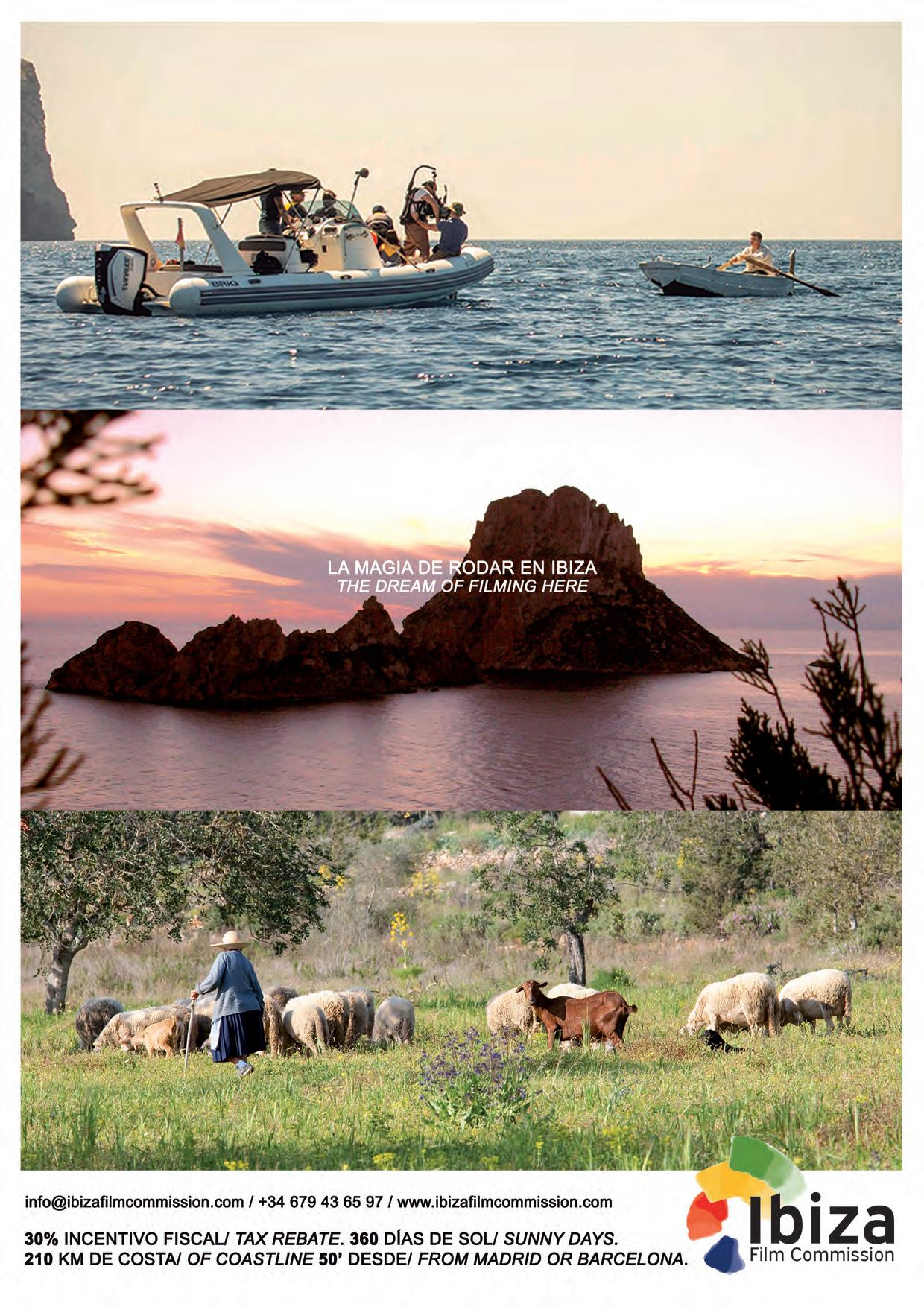
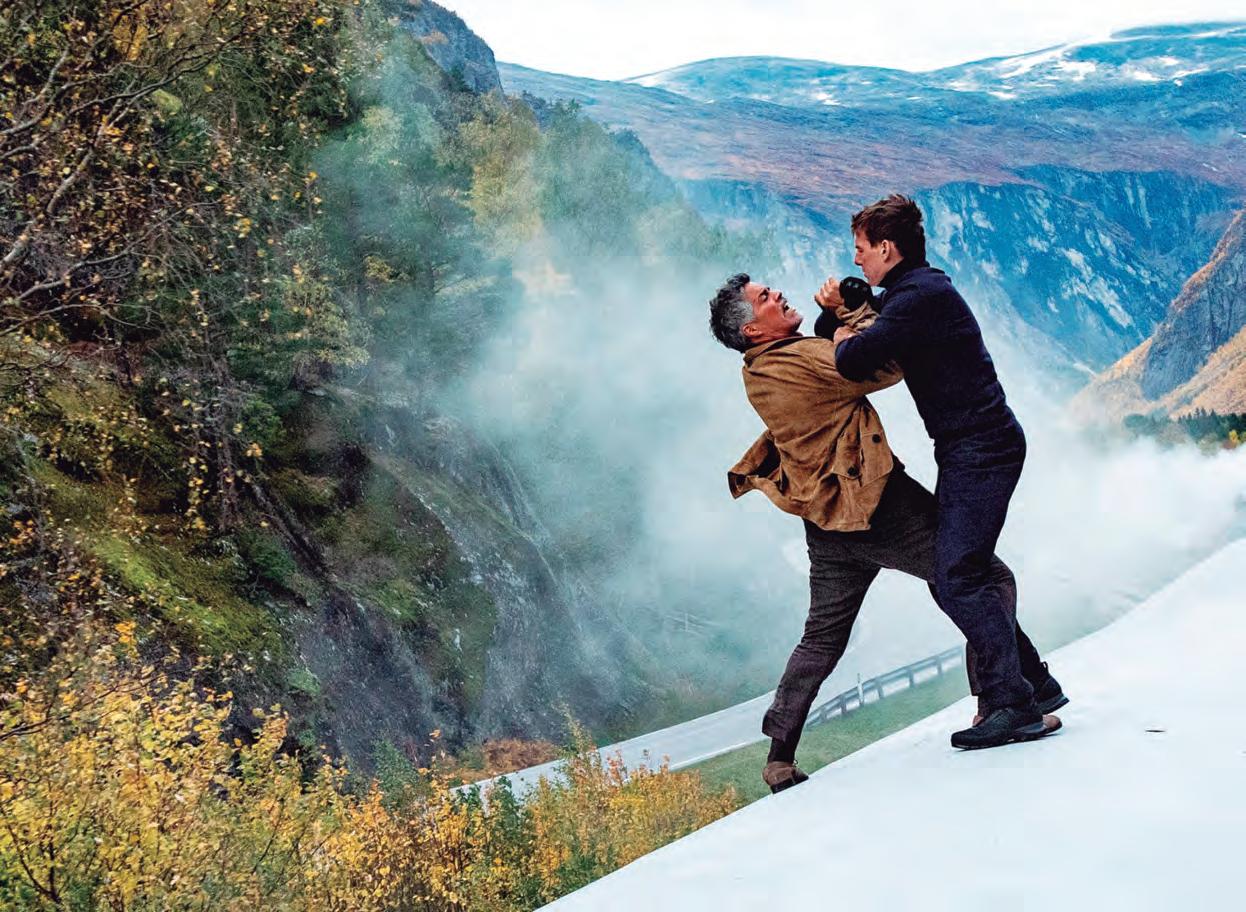
THE LOCATION MANAGERS GUILD INTERNATIONAL (LMGI) HELD THE 11TH ANNUAL EDITION OF THEIR AWARDS, WHICH HONOR THE CREATIVE USE OF FILMING LOCATIONS IN INTERNATIONAL PRODUCTIONS. THIS YEAR, SOME OF THE LUCKY WINNERS WERE OPPENHEIMER, MISSION IMPOSSIBLE: DEAD RECKONING – PART 1, FALLOUT, FARGO AND RIPLEY.
The LMGI Awards honor the outstanding and creative visual contributions by location professionals in film, television, commercials, and film commissions from around the globe. Every year, they receive an increasing number of submissions from around the world, demonstrating how the locations enrich the art of filmmaking.
The goal is to highlight international features, television and commercials in which the creative use of filming locations set the tone, enrich the character and enhance the narrative of the story.
The awards ceremony and reception took place in the end of August at the Wallis Annenberg Center for the Performing Arts in Beverly Hills before an audience of 400, including LMGI members, industry executives and press. Actress and producer Rachael Harris ( Suits, Diary of a Wimpy Kid, The Hangover) hosted the evening.
Besides the awarded productions we’ll tackle later in the article, LMGI had some special honorees.
The Motion Picture & Television Fund (MPTF), celebrating over 100 years of aiding the entertainment community, was bestowed with the LMGI
Humanitarian Award, recognizing the MPTF’s commitment to their exceptional work at the forefront of providing a wide range of health and social services to the entertainment community.
David Shepheard, Vice President, Martini Film Studios, presented the Lifetime Achievement Award to Supervising Location Manager Sue Quinn, known for her work on the Fantastic Beasts Harry Potter and Pirates of the Caribbean franchises. She was recognized for her seamless integration of real-life locations with the magical world in almost 40 films.
The Trailblazer Award was given to Location Manager Bill Bowling, known for
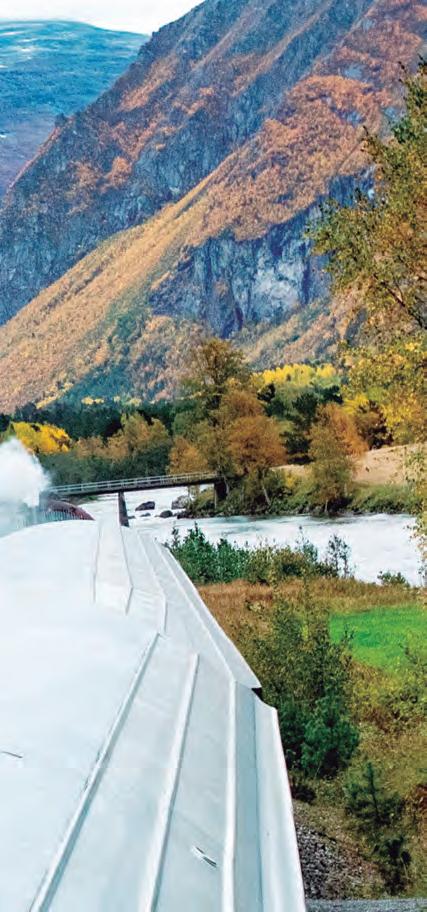
his work on blockbuster films such as Jupiter Ascending and Cloud Atlas. This honor celebrated Bowling’s stellar trailblazing career in the production industry for over five decades, which has led him on a worldwide journey to over 95 countries. Additional presenters included Helena-Alexis Seymour ( Chronicles of Jessica Wu ), Kate Linder ( Young and the Restless ), Doug Jones ( The Shape of Water, Pan’s Labyrinth ), Gary Hall Jr. (ten-time Olympic swimming medalist), and Jaclyn Philpott (AFCI Executive Director), among others.
OUTSTANDING LOCATIONS IN A PERIOD TELEVISION SERIES : Fallout. Filmed in the United States (Utah and New York) and Namibia
OUTSTANDING LOCATIONS IN A CONTEMPORARY TELEVISION SERIES : Fargo (Season 5). Filmed in Alberta (Canada)
OUTSTANDING LOCATIONS IN A TV SERIAL PROGRAM, ANTHOLOGY, MOW OR LIMITED SERIES : Ripley. Filmed in Italy
OUTSTANDING LOCATIONS IN A PERIOD FEATURE FILM : Oppenheimer Filmed in the United States (New Mexico)
OUTSTANDING LOCATIONS IN A CONTEMPORARY FEATURE FILM : Mission Impossible: Dead Reckoning – Part 1 . Filmed in Norway, United Kingdon and Italy
OUTSTANDING FILM COMMISSION: Film in Iceland for True Detective: Night Country
OUTSTANDING LOCATIONS IN A COMMERCIAL : Toyota: ‘Present from the Past’ . Filmed in the United States (Washington State)
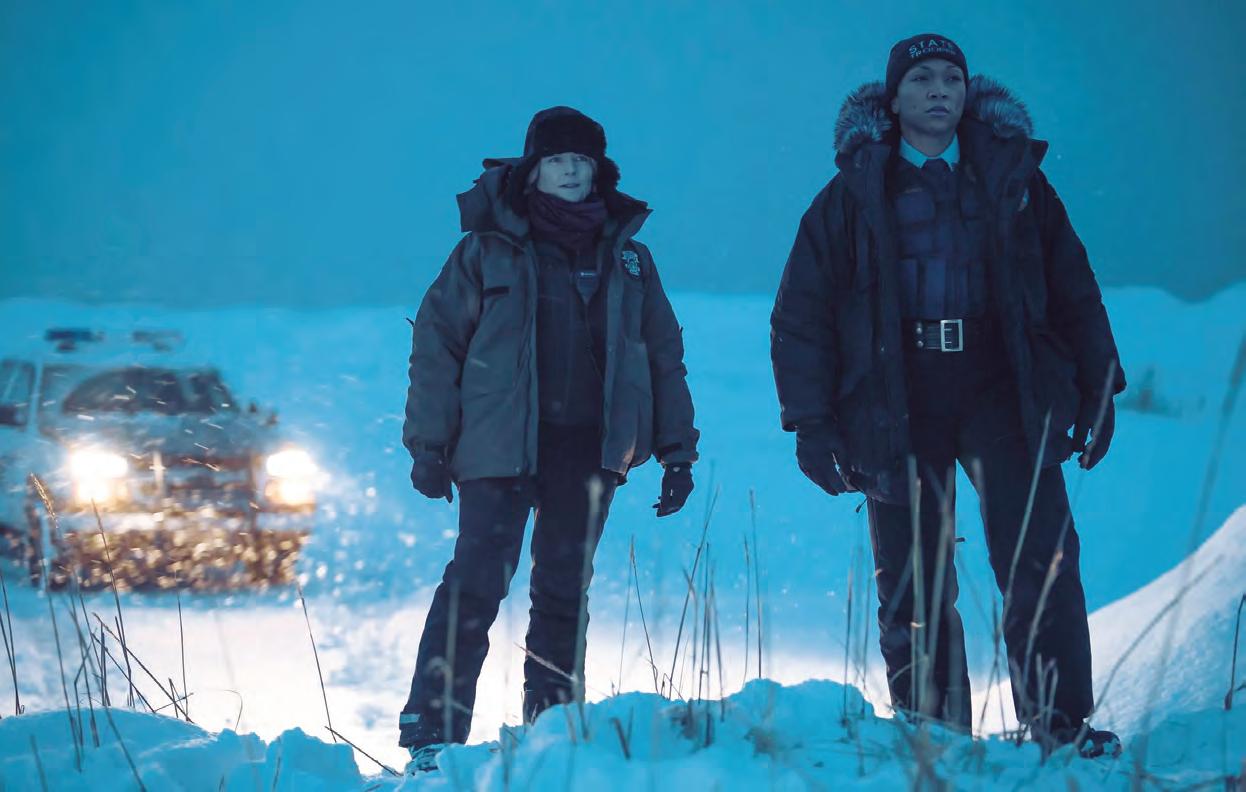
VENIA VERGOU IS THE MANAGER OF THE EUROPEAN FILM COMMISSIONS NETWORK (EUFCN) SINCE JANUARY
2024. RUBIK HAS CONTACTED HER SO THAT SHE TELLS US ABOUT THE ASSOCIATION’S 10 PRIORITY GOALS AFTER ANGELICA CANTISANO, WHO WAS IN THAT POSITION FOR 12 YEARS, HAS STEPPED DOWN.

As the former director of the Hellenic Film Commission at the Greek Film Centre (2017-2021), Venia Vergou has also been a member of the EUFCN Board of Directors from 2019 to 2021. Vergou started her professional years as a film critic and then worked as a producer, as film projects coordinator at the acclaimed art exhibition documenta 14, and as head of communications and film programmer at the Greek Film Archive.
1. Fostering Knowledge Exchange and Mobility among European Film Commissions: “EUFCN is committed to continuously enhancing the exchange of knowledge and best practices among its 100 film commission members in 32 countries. Through networking gatherings and panels at major film industry events, we create a supporting space for connection, collaboration, and the sharing of insights. We aim to further promote the mobility of Film Commissioners within the European audiovisual sector, supporting the growth and creativity of our members”.
2. Supporting Members’ Training Activities: “The majority of European Film

Mission: Impossible - Dead Reckoning - Part One ‘s epic stunt with a motorcycle jump off the 1,246 meter tall Helsetkopen mountain cliff (Norway)
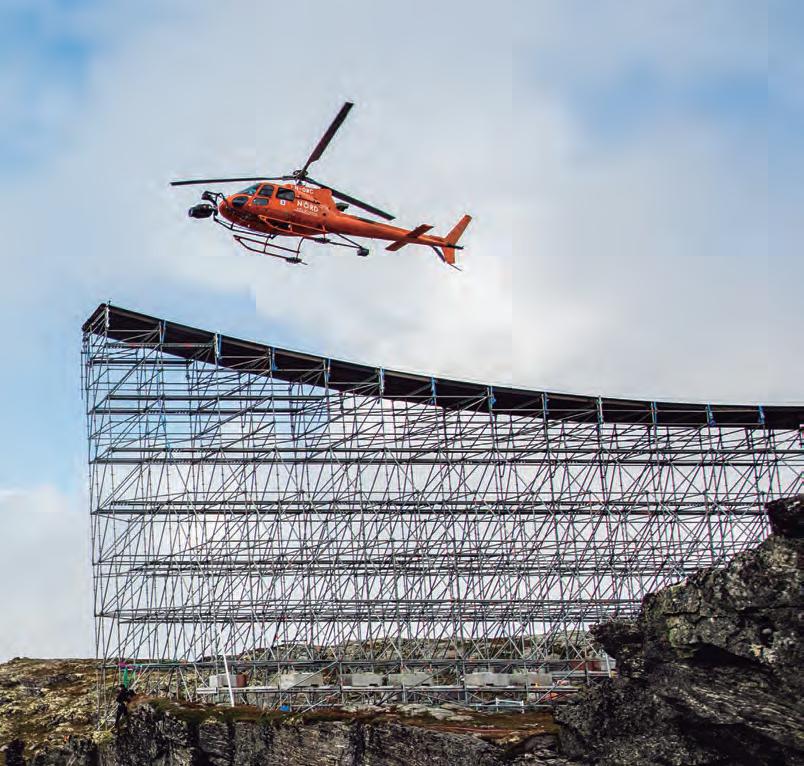
Commissions offer training activities covering a wide scope of different fields of the film industry. Starting in autumn 2024 and looking towards the future, EUFCN is committed to supporting the efforts of its members by promoting their activity and offering consultation that includes access to experts, speakers, and networking opportunities. We are also organizing online training sessions in collaboration with Film Commissions, to provide members with practical tools to integrate new practices into their work”.
3. Encouraging the Establishment of new Film Commissions in Europe: “EUFCN advocates for the vital role of Film Commissions in supporting local film industries and cultures. By providing guidance and resources, we aim to encourage emerging Film Commissions in Europe to create film-friendly communities, build strategic networks, and learn how to collect data and solve problems effectively”.
4. Expanding the EUFCN Location Awards: “EUFCN not only promotes locations across Europe, it is also actively working towards the growth and expansion of the EUFCN Location Awards, the Association’s annual prize that celebrates European Filming Locations over the last
eight years. Through this initiative we acknowledge the economic impact and social growth of a territory generated by filming.
Our aim is to highlight the diverse landscapes across Europe, the creative use of filming locations, the intricate work behind the scouting process which involves film professionals, Film Commissions and local authorities. We will continue to encourage submissions representing a wide range of productions, from small to highend”.
5. Promoting a more Sustainable Film Industry: “EUFCN is dedicated to promoting sustainable and responsible practices in the film industry in Europe. The ‘Green Film’ page on the EUFCN website gathers up-to-date links to green protocols and best practices adopted by Film Commissions within our network, along with major European programs and platforms focused on sustainability in the audiovisual sector. Our goal is to expand our involvement in European projects aimed at establishing new standards for sustainable and inclusive film production”.
6. Strengthening the Ties with Existing Networks: “EUFCN recognizes the importance of collaborations and
partnerships in the industry. We aim to strengthen our relationships with existing associations and networks of film commissioners, producers, location professionals, studios, and more, both within Europe and internationally. To facilitate these connections, we plan to continue organizing matchmaking events and fostering ongoing exchanges with key networks in the industry to tackle common challenges and seize new opportunities together”.
7. Facilitating the Development of Co-Productions: “Through targeted matchmaking events, EUFCN helps producers gain a clear understanding of the various incentives and regulations in Europe, facilitating the development of successful co-productions. Our mission is to contribute to the cultural diversity and richness of European and international cinematic heritage by enhancing creative cross-border storytelling and cooperation”.
8. Highlighting Policy Making and Strategies: “By representing 100 Film Commissions across 32 countries, EUFCN serves as a key gateway to Europe for filmmakers worldwide. We provide support to the film industry through the constant collaboration of the European Film Commissions with Film Funds in policy making and in building successful strategies for the implementation of such strategies”.
9. Connecting Emerging Talents with the Wider Film Community: “We nurture new talents and upcoming European professionals and we enhance their connectivity with different stakeholders for the benefit of the growth of both our members and of the wilder film community”.
10. Conducting research projects in the interest of Members: “EUFCN aims at participating in research projects with experienced partners from the film industry on the objectives of sustainability, diversity, inclusion, innovation and creativity. The Association’s involvement can be instrumental in developing and implementing various projects’ business strategies”.
COMPLEMENTING THE ARTICLE ABOUT THE LMGI AWARD WINNERS, WE WANT TO LOOK BACK AT ANOTHER PRESTIGIOUS AWARD RELATED TO LOCATIONS: THE EUFCN LOCATION AWARD. WE’LL KNOW ABOUT THEIR NEXT FINALISTS SOON BUT LET´S REMEMBER THE SEVENTH EDITION.
The EUFCN Location Award is an award for best European location in the film and TV industry organized by EUFCN – The European Film Commissions Network.
The winner of the EUFCN Location Award is determined by the general public’s vote. One lucky name picked among the
voters has the chance to travel to the winning location.
During the first stage of the competition, EUFCN member film commissions submit one location from a film or a TV series shot in their territory. Then, in order to have 5 finalists, the EUFCN Location Award Jury evaluates all submissions, focusing on the significant role of the location in the story and its outstanding use inside the audiovisual product.
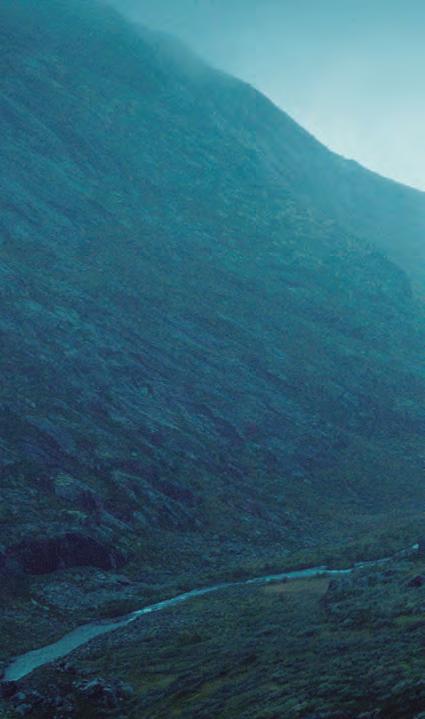
“A producer once told me this: there are two key elements at the start of a production of a film: locations and cast,” said EUFCN Co-President Carlota Guerrero. “In the same way an actor is not just a pretty face, I believe that a location is not just a pretty landscape. The EUFCN Location Award nominees are a proof of that. The Location Award is a celebration of the complex process and the hard work behind the scouting and


creative use of locations, the involvement of the film commissions together with local authorities and local communities, as well as the economic and social growth generated by filming in a territory. It ultimately is about what’s beyond locations.”
Inis Mór for The Banshees of Inisherin –Screen Ireland was the winner this year. Inis Mór is the largest of Ireland’s Aran Islands. This isolated and rugged island was a key location
for the acclaimed film directed by Martin McDonagh, starring Colin Farrell and Brendan Gleeson as friends turned to bitter enemies.
THE FINALISTS OF THE EUFCN LOCATION AWARD 2023 WERE:
• Helsetkopen for Mission: Impossible — Dead Reckoning Part One – Norwegian Film Commission
• Hotel Parque do Rio for Mal Viver (Bad Living) – Portugal Film Commission
• Jotunheimen for Troll – Eastern Norway Film Commission
• Romsdalen Gondola for Succession (Season 4) – Western Norway Film Commission
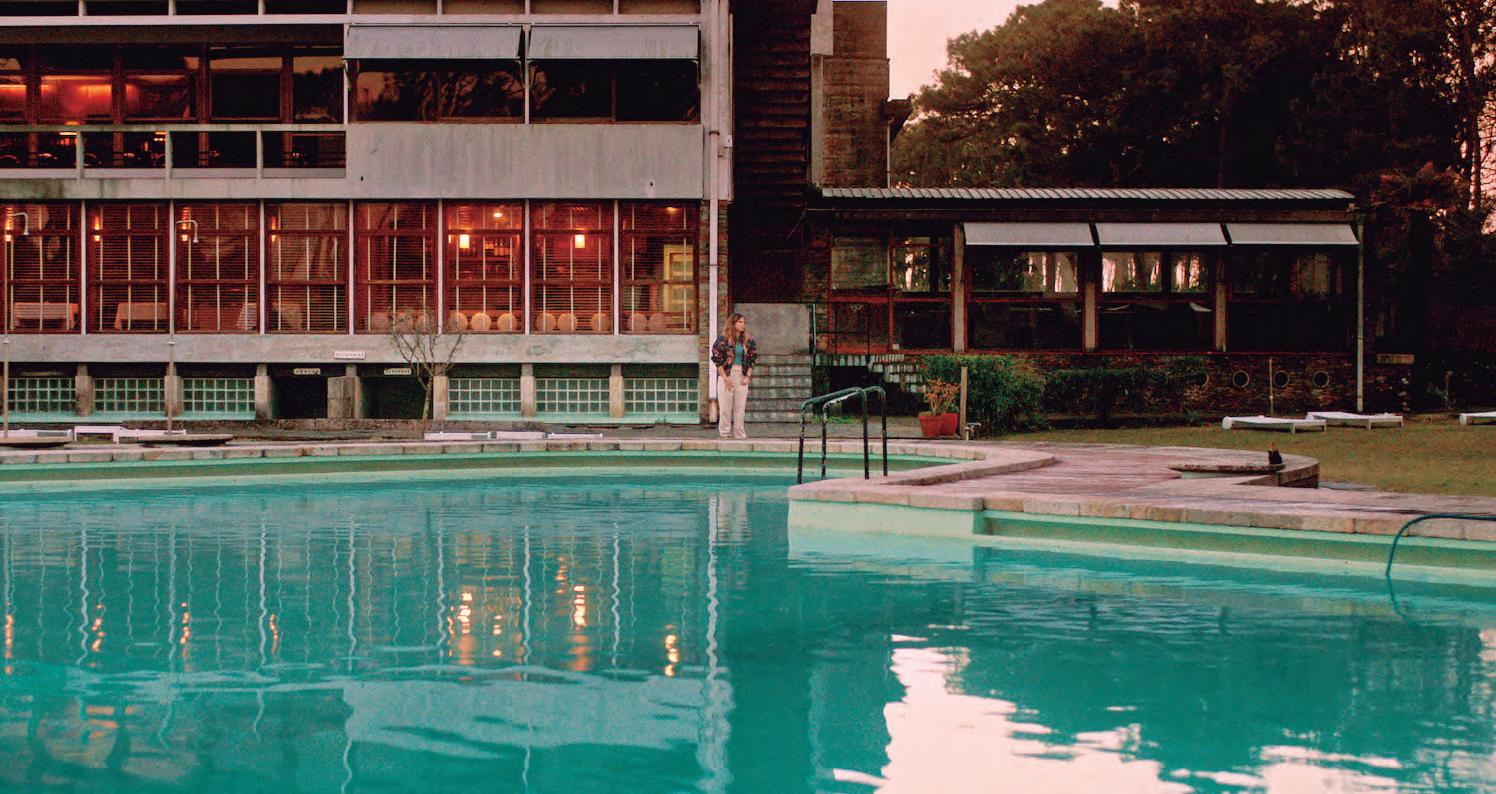
in the Portuguese
building is
and
so many plastic and visual possibilities” says the director, adding that “many scenes were invented just to take advantage of the perspectives the location offered. The hotel is the character that sticks this family together”.The hotel was built in the late 1960s, with a modernist architecture that stands out all over the movie. Since the film was shot during COVID-19 pandemic, it became the home and workplace of the cast and crew for more than 12 weeks.

THE ASSOCIATION OF FILM COMMISSIONERS INTERNATIONAL (AFCI) EXPANDED THE REACH FOR ITS ANNUAL AFCI WEEK CONFERENCE IN LOS ANGELES. THIS YEAR’S EDITION, WHICH TOOK PLACE AUGUST 25-28 AT UCLA’S
MEYER & RENEE LUSKIN CONFERENCE CENTER, NOT ONLY WELCOMED FILM COMMISSIONS, BUT ALSO STUDIO EXECUTIVES. INDEPENDENT PRODUCERS, LOCATION MANAGERS AND GOVERNMENT POLICYMAKERS.
Founded in 1975, the Association of Film Commissioners International (AFCI) is a nonprofit professional organization representing film commission members on six continents.
They carry out the AFCI Week 2024, global conference for film commission professionals. It´s a four-day series of events to address film commission trends, technologies, policies and best practices. Since it replaced the long-running AFCI Locations Show in 2018, the AFCI Week event has evolved into the only global conference focused on film commissioners and their vital yet unsung role in supporting economic development and job creation.
This year’s event attracted a recordbreaking number of Global Film Commission attendees from 35 countries, but also set a new benchmark for international participation.
In the past, attendance at AFCI Week was reserved exclusively for AFCI members. This year’s conference marks a major milestone as it opens its doors to decision-makers from across the industry.
“The purpose of AFCI Week is to facilitate connections between our film commission
members and the executives who decide where film and TV projects are produced,” said AFCI Executive Director Jaclyn Philpott. “Expanding attendance this year means that those with decision-making power will not only participate as speakers but also engage as attendees, enhancing opportunities for dialogue and collaboration.”
Philpott explained that expanding AFCI Week 2024 attendance aligns with AFCI’s strategic plan to broaden its membership across the industry via tiers for major and independent studio executives, producers, vendors and other industry professionals with the aim of bringing the industry closer to the global film commission network.
AFCI Week 2024 speakers represented industry-leading entities such as The Walt Disney Company, Annapurna, Warner Bros. Discovery, Sony Pictures Television, Amazon, Blumhouse, Paramount Studios, Fox, Lionsgate Studios, AICP, IFTA, Entertainment Partners and Olsberg-SPI, among others.
This year, AFCI debuted ‘The Film Industry Challenge’, an interactive
workshop designed to harness the collective expertise of AFCI members, producers, studio executives, and location managers. A good way to take part on discussions, debates, and ideation sessions that address the most pressing challenges facing the industry today including AI, technology and the use of locations. The workshop showcased the power of disruption to foster innovation, bringing together leading minds from across the sector.
Regarding the panels of this year, we can highlight an ‘Education Session for Film Commissioners on Empowering Places’, where attendees were able to dive deep into place branding and marketing to enhance the visibility of their regions. It was also worth noting the discussion ‘Beyond Hollywood’, where senior studio executives talked about navigating the global production landscape.
Another panels of this year were ‘How Would You Handle It’, a session for Film Commissions dedicated to realworld problem-solving, and ‘Leaders and Innovators in Physical Production Event’, an event celebrating achievements in television and film.
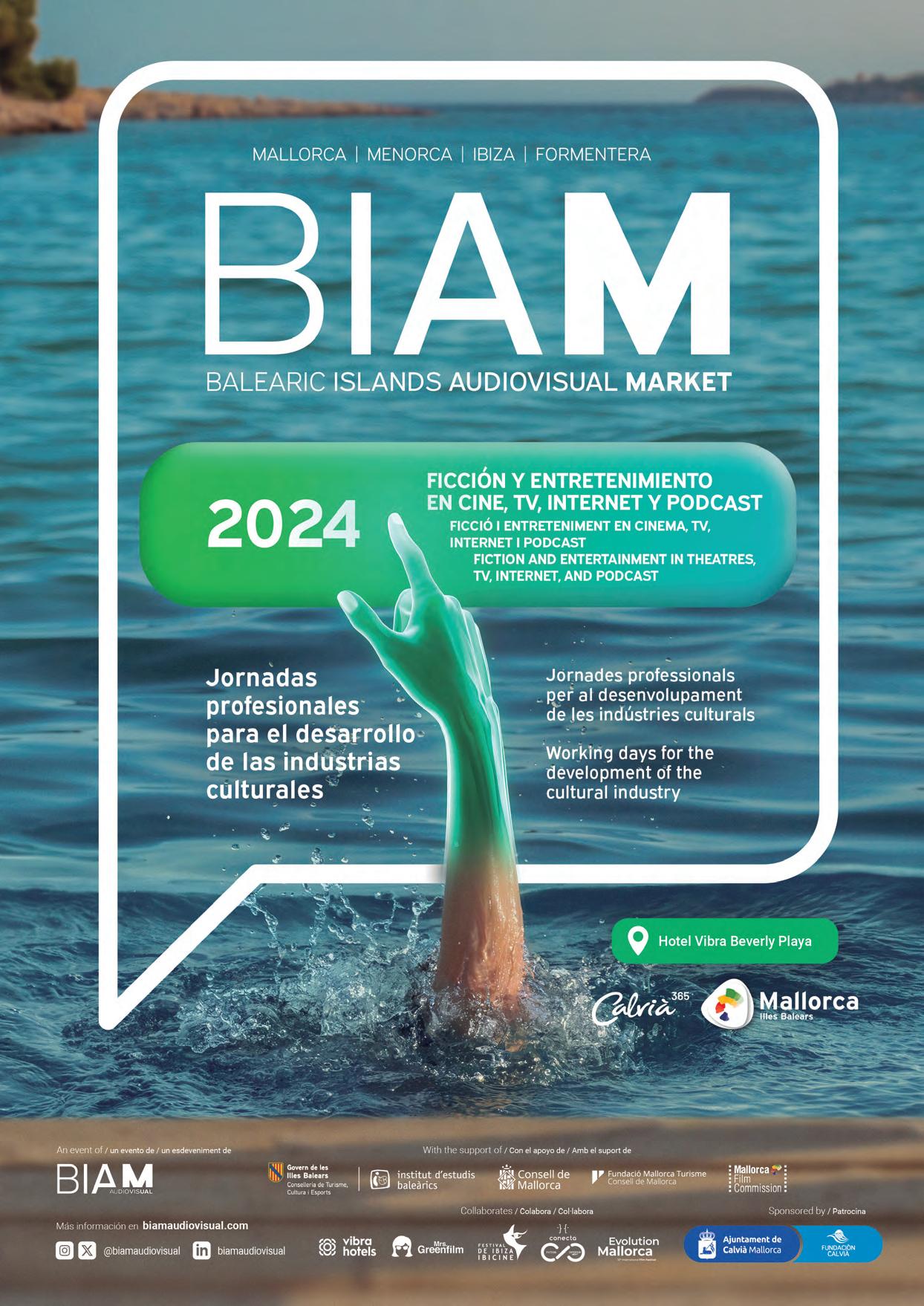

CHARLES RIVKIN, PRESIDENT OF THE MOTION PICTURE ASSOCIATION (MPA), DELIVERED AN INTERESTING OPENING KEYNOTE AT THE ANNUAL CONVENTION OF THE ASSOCIATION OF FILM COMMISSIONERS INTERNATIONAL. RUBIK WANTS TO HIGHLIGHT SOME OF HIS REMARKS.
First of all, he thanked the AFCI team for organizing the gathering: “Thanks for inviting me to join you today on the campus of UCLA – a fitting location not only as a premier beacon of higher learning, but as home to the country’s largest archive of motion picture and broadcast programming, outside the Library of Congress – and the world’s biggest university-held collection”.
Rivkin stressed the power of film to fuel economic growth and drive job creation: “To lift the workforce and raise wages. To enhance communities and enrich cultures. To inspire creativity and ignite competition”.
“At the Motion Picture Association, our goal is to open doors for studios and casts and crews to make extraordinary movies and TV shows. We do so by pursuing smart policies and regulations at the local, state, and national levels, at home and abroad. On film commissions, your objective intersects with
ours. Your purpose is to attract productions to your backyards; facilitate their entry into your towns and countries; inform them about policy changes and benefits; connect them with crews; and serve as stewards of a healthy ecosystem where storytellers can flourish and thrive”, he said.
People usually see the red carpet and the stars but film and TV “reaches construction workers and caterers, electricians and hairdressers, set builders and small businesses and artists and other
behind-the-scenes folks playing vital roles in the movie-making process”.
Rivkin remarks that´s what counts and why MPA partners with film commissioners and lawmakers to “make the space for our creative community to do what they do best”. One of the ways they meet this shared mission is “through advocacy for production incentives and film tax credits”.
Olsberg SPI has released an updated study, commissioned by the MPA, demonstrating” how these key policy tools impact communities everywhere for the better – how they translate into real jobs, real economic activity, real benefits in cities, towns, and provinces worldwide”.
As this white paper shows, “the last seven years have seen production incentives increase by 38 percent globally, and that’s because officials correctly see these programs as significant drivers of economic dynamism in their jurisdictions”.
“Many governments and legislators view these incentives as flexible and effective means to draw inward investment and stimulate production in their backyards. They see how those investments lead to more skills development and job creation in the digital sector. How they bolster their brands and boost tourism”, he added.
Researches call this “notable impact on economic output” – and the data bears out the success of these initiatives. “Nearly everywhere we look, in U.S. states and in countries crisscrossing the planet, the evidence shows how each dollar invested through these incentive programs yields multiple dollars more in benefits to the local marketplace”, states Rivkin.
Rivkin summarized some international figures: “For instance, in Georgia, every dollar invested in their incentive program yields over six dollars in economic benefits. In Norway, the return on investment is just under five dollars. In Australia, it’s nearly six dollars. In Iceland, it’s closer to seven dollars.
And in New Mexico, it’s roughly $8.40 in added economic value on the ground”.
There are broader effects on a community anytime a crew comes to town.
“Around the world, a major feature film production pumps $1.3 million per shoot day into local economies and employs nearly 1,500 local workers. And the average MPA member company series production spends nearly $49 million over the course of a location shoot globally, and that includes upwards of $26 million in local wages paid to more than 1,850 local workers. Simply put, when we evaluate the full panoramic view of our industry, a clear picture emerges: these incentives work. These measures are valuable”, Rivkin stressed.
As he said, we live in a time of change and upheaval, but there´s a constant: “This industry has a long, deep, treasured tradition of resilience – and an unmatched ability to adapt, innovate, persist, persevere, and continue delivering growth and opportunity to our communities”.
And there’s an important piece in this puzzle: “Filmmakers will always be on the lookout for the perfect location, for skilled crews and actors, for ideal scenes and settings, for the chance to fill our screens with incredible stories never before conceived, witnessed, relayed, or told. Filmmakers will always need an effective MPA advocating for their rights and freedoms – and strong film commissions helping them navigate the local landscape”.
He claimed there´s a common thread binding it together their unified commitment to what production means, what creators do, and what our industry is at its best: “An economic engine. A vehicle for inspiration, education, and illumination. A driver of cultural resonance and richness.
A source of pride and prosperity for families, workers, business owners, casts, crews, studios, audiences, and neighborhoods the world over (…) All of us have a common interest in shining a bright light on the vital work of film commissions. Thank you for being our partners in our pursuit”.
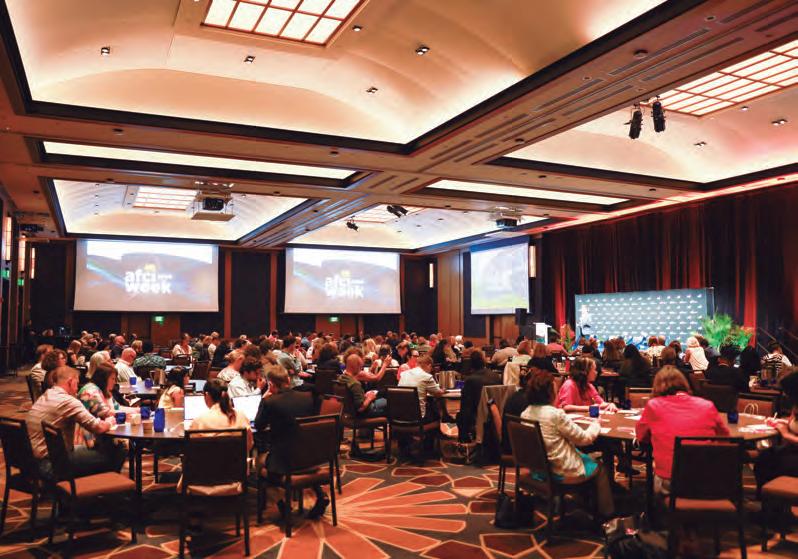

THE SPANISH AUDIOVISUAL SECTOR IS EMBRACING A GROWING GLOBAL TREND: SUSTAINABILITY IN FILM AND TV PRODUCTIONS. KNOWN AS GREEN SHOOTING, THIS PRACTICE IS TRANSFORMING FILM AND TELEVISION PRODUCTION PROCESSES INTO ONES THAT ARE MORE ENVIRONMENTALLY CONSCIOUS, IMPLEMENTING MEASURES AIMED AT MINIMIZING CARBON FOOTPRINTS AND OVERALL ENVIRONMENTAL IMPACT.
Various companies within the industry have started to adopt technological, energy-saving, and logistical solutions that promote a more eco-friendly production model , aligning themselves with the broader commitment to greener industries.
To explore the specific measures being implemented in Spain, we reached out to service providers such as Parc Audiovisual de Catalunya, Fluge Audiovisuales, Kinolux , and Creast , a company that offers digital technology to help entertainment companies and professionals measure, predict, and reduce their carbon footprint. These
actions not only respond to the growing demand for corporate responsibility, but they also demonstrate that change is indeed possible in an industry that has traditionally had a high environmental impact.
The concept of green shooting has evolved from being just a trend into an absolute necessity. In a world that increasingly demands responsible business practices, the screen production industry is stepping up by collaborating with service providers and sustainability professionals like eco-managers. These collaborations ensure that the audiovisual industry continues to evolve toward a greener future.
Let’s take a closer look at some of the specific practices Spanish companies are using to pursue more sustainable, ecofriendly productions.
PARC AUDIOVISUAL DE CATALUNYA: A LEADER IN ENERGY EFFICIENCY
One of the leaders in this process is Parc Audiovisual de Catalunya , a production hub that has implemented various sustainable practices. Parc has made great strides by implementing “several actions committed to environmental protection”, focusing primarily on energy efficiency and recycling of materials used during productions.
Soundstage Number 4 of Parc Audiovisual de Catalunya

One of the key measures adopted by Parc Audiovisual is their switch to 100% renewable electricity across all their facilities, including the soundstages. This shift, combined with the creation of dedicated recycling zones for items such as fluorescent lights, paints, and batteries, ensures that every production carried out at the Parc contributes to reducing the overall carbon footprint. According to the Parc Audiovisual team, one of their biggest challenges has been “minimizing the use of diesel generators at outdoor locations in our production center”, which is why they’ve established electrical connection points powered by renewable energy to provide a more sustainable option.
This commitment to sustainability has been well-received by production companies and has also contributed to a broader shift in the industry’s mindset. The Parc team notes: “We’ve seen a growing trend toward using electric vehicles instead of conventional ones, or opting for shared transportation for production teams”. This shift has significantly reduced the emissions generated by productions held at the Parc.
Fluge Audiovisuales, one of Spain’s most prominent screen service providers, has made significant efforts to align its facilities with sustainability standards. Their Louladi Estudios, located in Arganda del Rey (Madrid), serve as an excellent example of how energy efficiency and resource management can be integrated into audiovisual production.
One of the main initiatives at Fluge Audiovisuales is the use of renewable energy Solar panels installed at their facilities help reduce dependency on non-renewable energy sources, making a meaningful contribution to lowering the carbon footprint of the productions hosted there. In addition, Fluge has replaced traditional lighting systems with LED technology , which not only consumes less energy but also generates less heat, creating more comfortable working conditions for production teams.
Fluge’s commitment to sustainability extends beyond energy consumption. They have implemented a state-of-the-art air
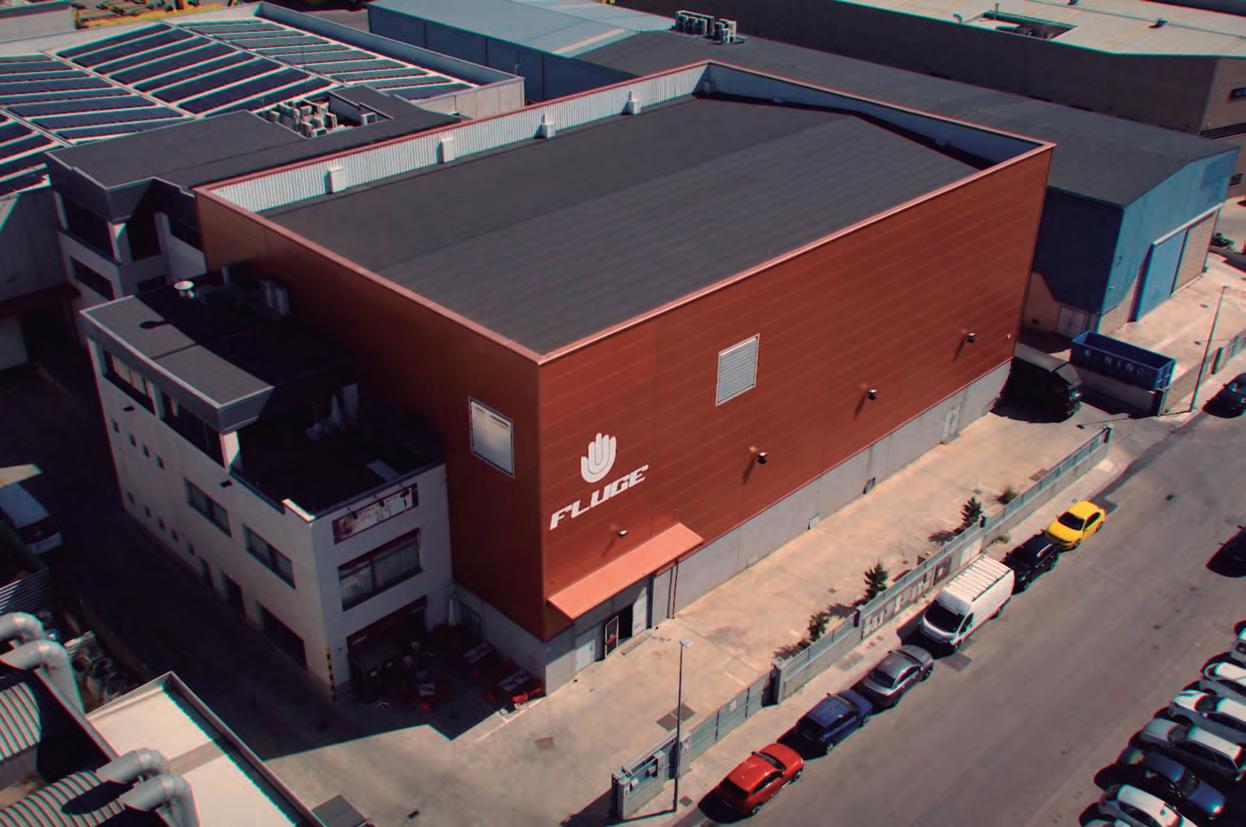

recovery system in their studios, allowing them to reuse fresh air and optimize energy consumption. This modern climate control system, along with other energy-saving measures, helps reduce the environmental impact of productions held at their facilities.
Another key initiative at Fluge is their focus on waste management during productions. The company has introduced recycling practices that promote the separation of recyclable waste and minimize non-recyclable waste generated during shoots.
In addition to infrastructure improvements, Fluge places a strong emphasis on sustainability training for their employees. As the Fluge Audiovisuales team explains, educating staff on sustainable practices is crucial to ensuring that everyone involved in audiovisual productions actively contributes to minimizing the environmental impact.
Kinolux , a company specializing in lighting and logistics for audiovisual productions, has taken significant steps towards sustainability by incorporating eco-friendly solutions such as a fleet of
Measure, predict, and reduce their carbon
footprint demonstrate that change is indeed possible in an industry that has traditionally had a high environmental impact.
electric vehicles and their Kinogreen generators . According to Tito Arcas, cinematographer and member of the Spanish Film Academy, Kinolux was a pioneer in Spain , offering an all-electric fleet for film and TV productions “ We want to be part of the change in this sector and be mindful of the environmental impact of our work,” says Arcas. He adds that Kinolux’s electric vehicle fleet, which is unique in the film and advertising sectors, “eliminates pollution from our transportation logistics,” contributing to a notable reduction in CO2 emissions from the shoots they service.
Electric vehicles are just one part of Kinolux’s efforts to reduce their carbon footprint. Their Kinogreen generators, which range from 12 kWh to 30 kWh, are another key tool in their push for energy efficiency. These generators, which
can be recharged using electricity or solar panels, provide “clean, immediate power anywhere” and reduce the need for conventional cabling by up to 30%. Additionally, the silent operation of these generators not only prevents noise pollution but also makes them more energy-efficient than conventional generators.
Feedback from production teams who have used the Kinogreen generators has been overwhelmingly positive. “Teams are often surprised to find that these generators are in no way ‘inferior’ to conventional ones,” says Arcas. He highlights that the Kinogreen generators have proven to be powerful, efficient, and versatile, making them popular not only in film but also in other types of events.
In addition to electric vehicles and eco-friendly generators, Kinolux has made significant investments in LED technology and innovative lighting products like Airstar balloons . These lighting balloons, which are market leaders for film and event lighting, allow for considerable energy savings, as well as reductions in transportation and labor costs. Thanks to their lightweight and efficient design, Airstar balloons require fewer personnel for setup and operation, optimizing time and resources on set. This innovative technology has enabled
Kinolux to offer a lighting solution that combines power with sustainability, making Airstar balloons a top choice for productions seeking to reduce their environmental impact.
The growing demand for sustainable solutions in the film and TV sector has also been driven by the rise of new roles such as eco-managers , who ensure the sustainability of productions. Kinolux collaborates closely with these professionals, working alongside lighting teams to recommend the most environmentally friendly solutions. “We always recommend options with the lowest environmental impact, such as our Kinogreen generators, electric vehicle fleet, and LED lighting solutions,” explains Arcas.
Finally, we spoke to Creast, a company that has developed digital tools to help measure and reduce the environmental impact of audiovisual productions
According to Yolanda Costas , head of sustainability for the fiction and entertainment production area at Creast, more and more companies in the sector are reaching out to them to establish sustainability protocols. “We’re seeing more companies across the sector— whether production houses, service providers, distributors, or even festivals— who are becoming genuinely interested in implementing sustainability measures ”, explains Costas.

The concept of green shooting has evolved from being just a trend into an absolute necessity. In a world that increasingly demands responsible business practices, the screen production industry is stepping up by collaborating with service providers and sustainability professionals like eco-managers.
The growing demand for sustainable practices is partly due to new funding requirements, both public and private, which push production companies to adopt strategies that reduce their environmental impact. “These strategies are typically put in place during the development and preproduction phases, which is when we can make the biggest impact on production design”, says Costas.
A key aspect of Creast’s sustainability efforts is measuring carbon footprints
The company emphasizes the importance of implementing energy-saving solutions , especially on film sets, where emissions can be drastically reduced. “By ensuring that the set is powered 100% by renewable electricity , we can reduce emissions per shooting day by up to 70%, compared to using diesel generators,” says Costas. Additionally, controlled environments such as soundstages allow for more efficient waste management and logistical planning, further reducing the environmental impact.
Data also plays a crucial role in Creast’s approach to sustainability. The company’s technology allows production teams to identify areas for improvement and measure the real-world impact of sustainability measures once implemented. “Data helps us understand the actual impact of each action , enabling us to optimize resources,” says Costas. Although Creast doesn’t share specific data due to company policy, they estimate that national productions have seen an average reduction in emissions of between 10% and 20%, depending on the sustainability measures adopted.

The Region of Murcia, in the southeast of Spain, will have a large film and tv production center linked to Universal Production Services. This will be built in the Los Cármenes industrial estate in Las Torres de Cotillas. It is a relevant private initiative with an investment estimated at around 100 million euros. Stage Fifty, which has five locations in the UK dedicated to film and television
production, is embarking on this ambitious project.
The new facilities will cover 100,000 square meters and will be used for the production of films and TV series. During the last year, the Development Institute of the Region of Murcia has maintained a constant dialogue with representatives of Stage Fifty. This continuous effort has been crucial to align the interests of both parties and facilitate the development of the project.
Toboggan Group announces the start of the first of three phases in the construction of a production Hub in the Villaverde district of Madrid (Spain). It is the beginning of an ambitious project that includes the creation of 15 production centers in different areas of the Community of Madrid, adding to those already operational to reach a total of 28 production studios under the management of the company.

The first phase of the project includes the construction of a hub with more than 30,000 m² of facilities for five independent production centers. These centers will have soundstages that vary between 2,500 m² and 1,200 m². All of them will have 14 meters of height, allowing the construction of large sets.
This first phase is scheduled to end in the third quarter of 2025. The next phases are expected to be completed in 2026 and 2027, respectively.
Telefónica Servicios Audiovisuales (TSA) will launch a real-time virtual film production center for the Provincial Council of A Coruña (Galicia, in the northwest of Spain), within the Ciudad de las TIC technological park.
The new virtual production center will be built on a 750 m² set, with dimensions of 30 x 25 meters and 12 meters high. Telefónica, in collaboration with Tangram
Solutions, will be responsible for the acquisition, supply, integration and installation of all the equipment necessary for its operation.
The studio will have a 4K main screen, a 100 m² top screen, advanced lighting and auxiliary LED screens, featuring technology from Pixotope, Unreal Engine, Trackmen and a large format digital camera system. The infrastructure will also include two VFX rooms and a Dolby Atmos audio post-production room.


